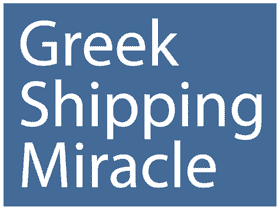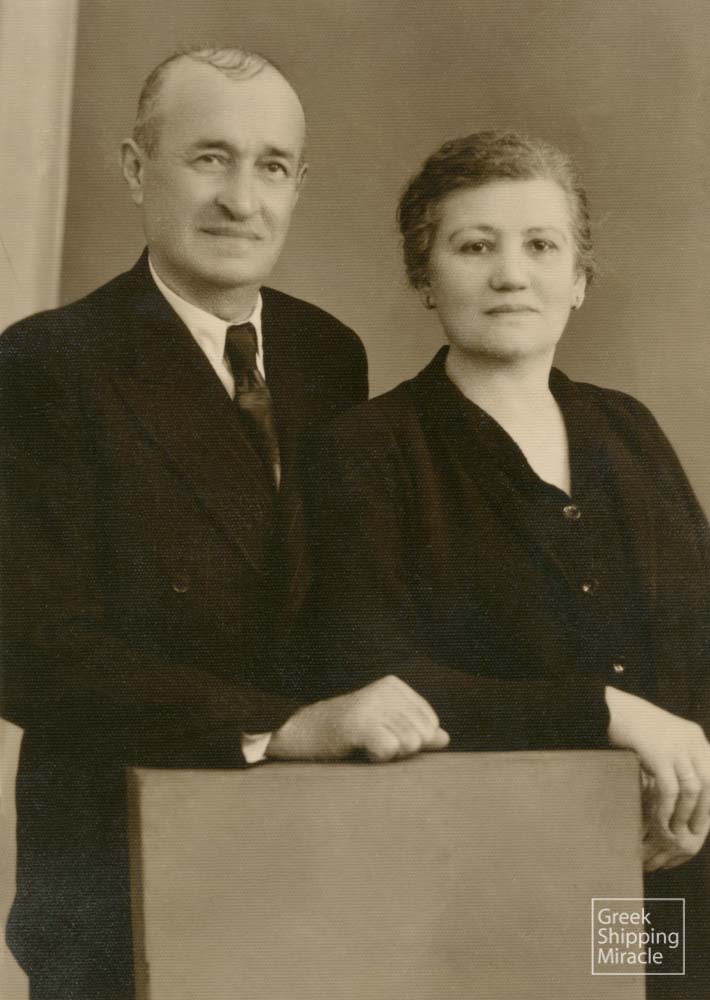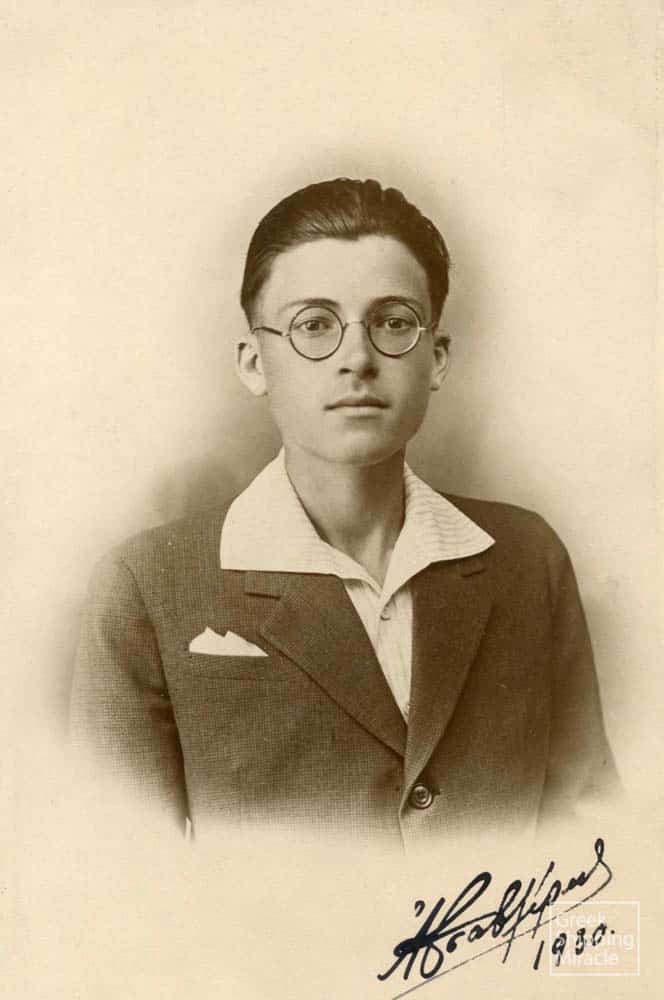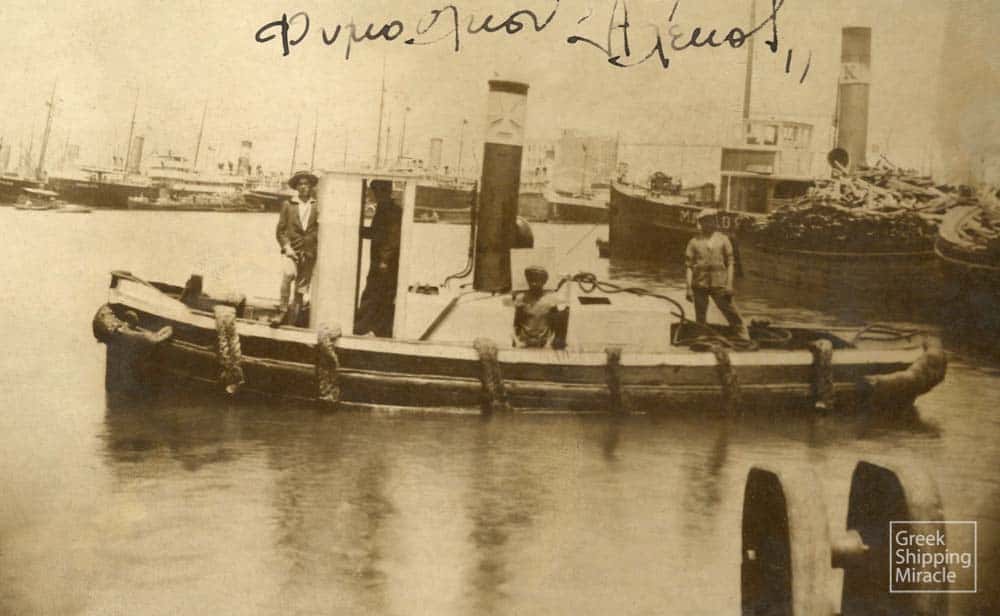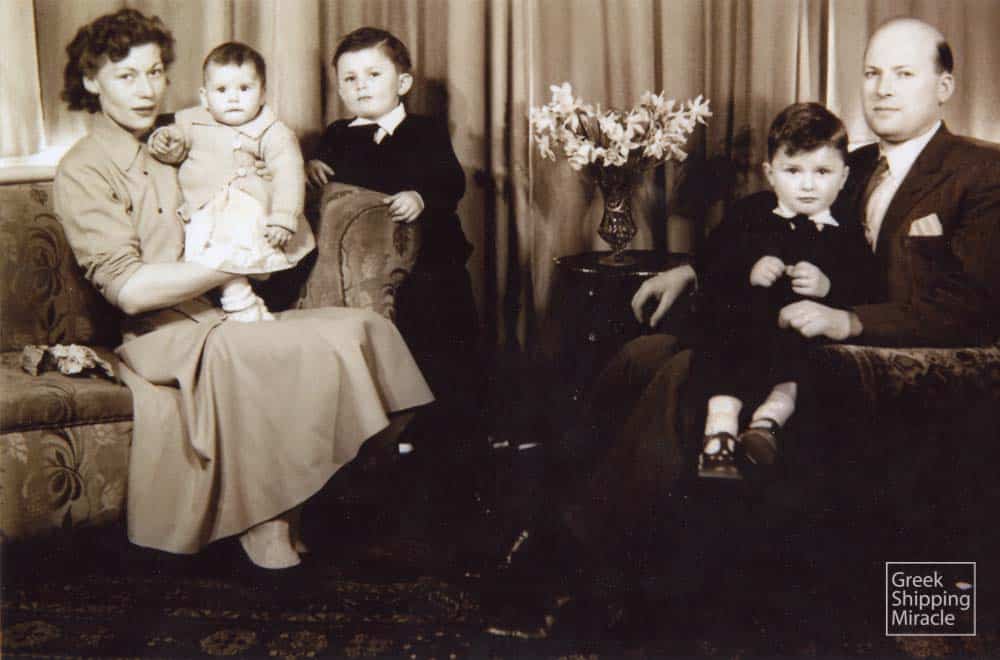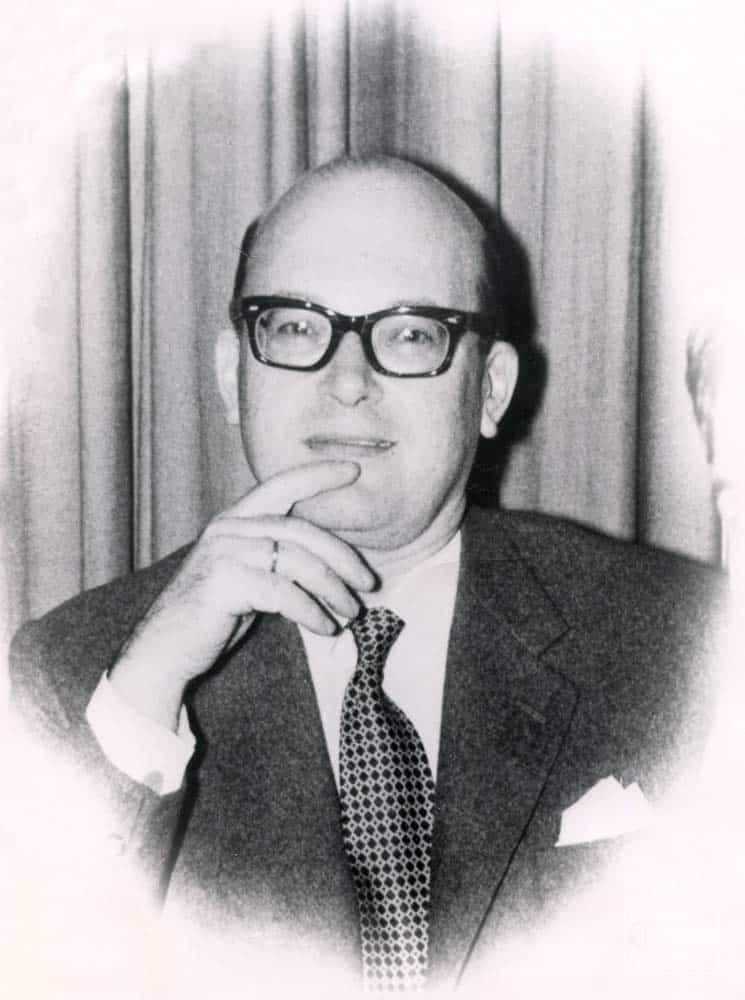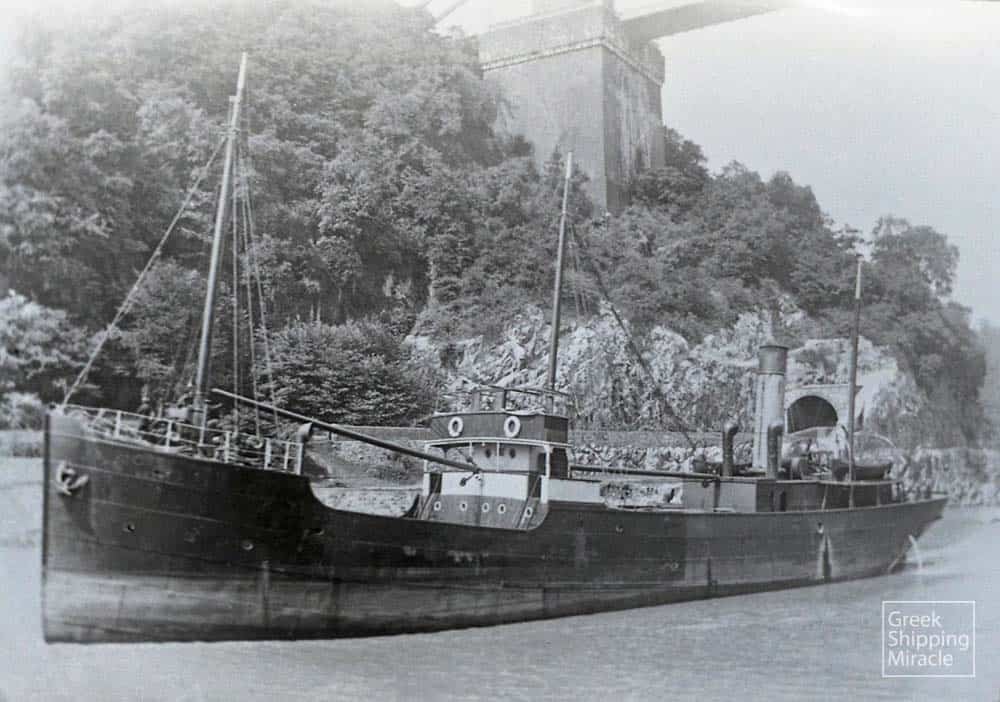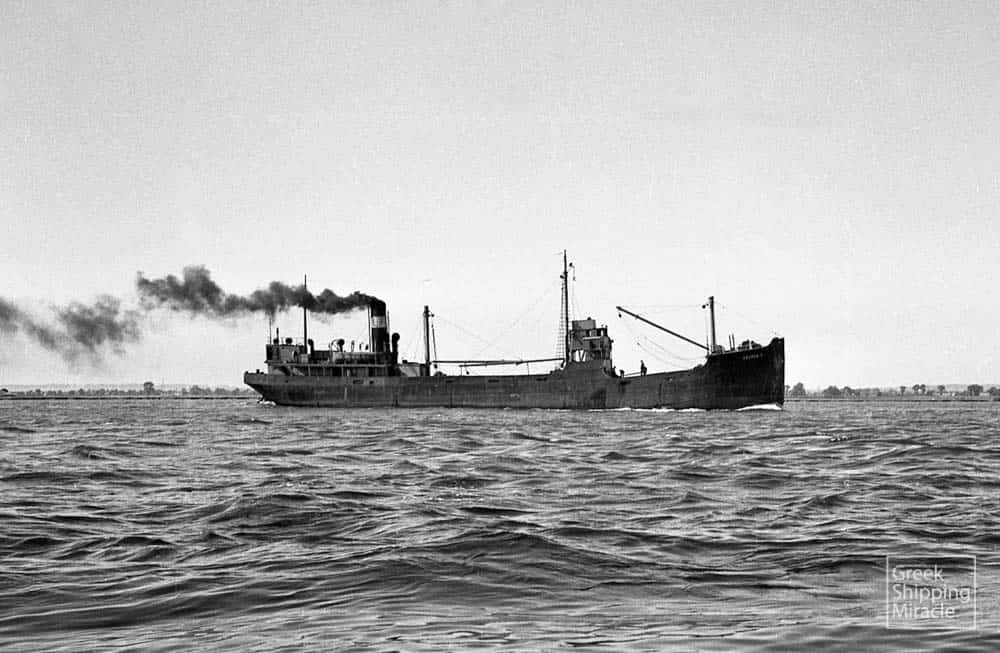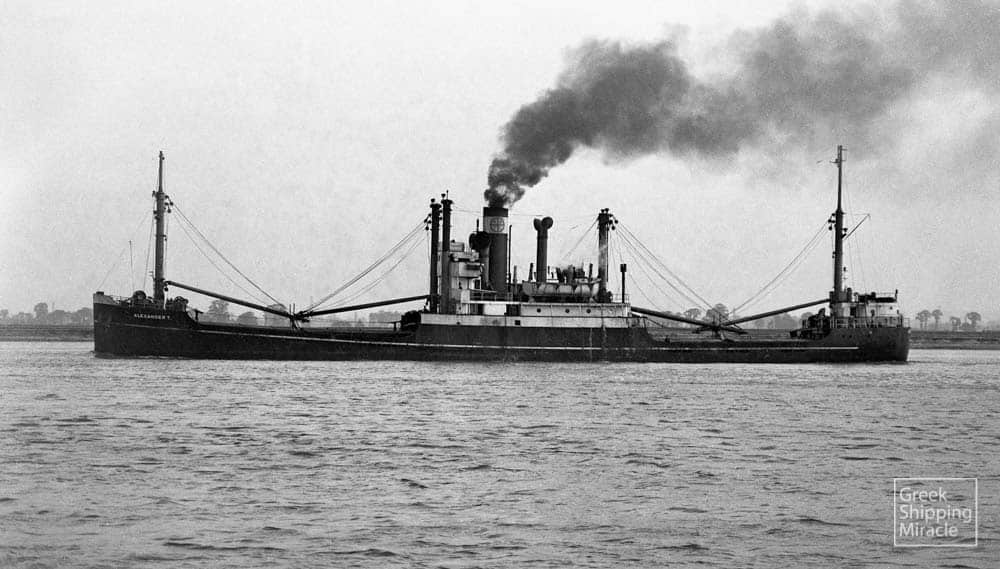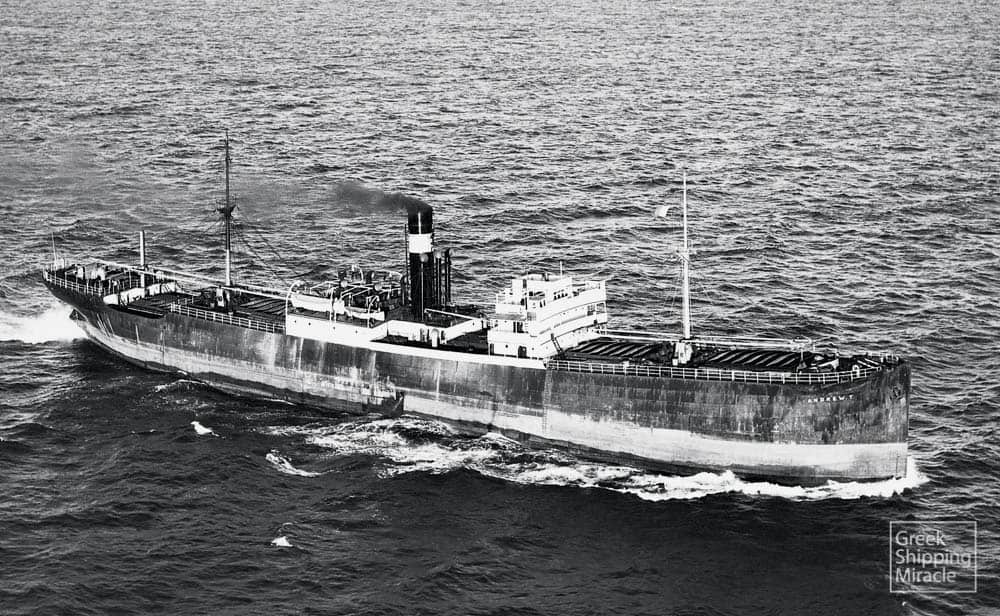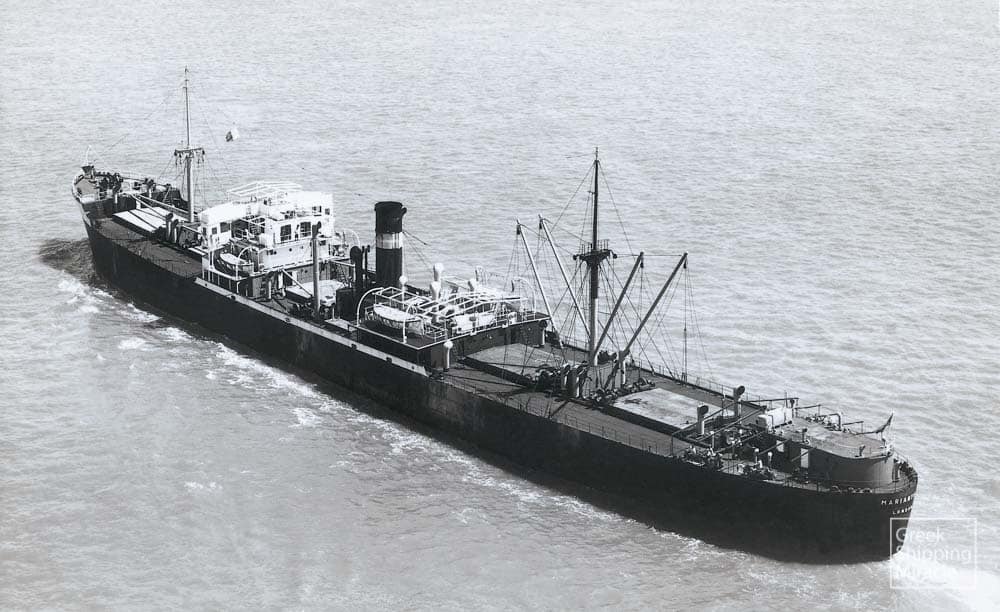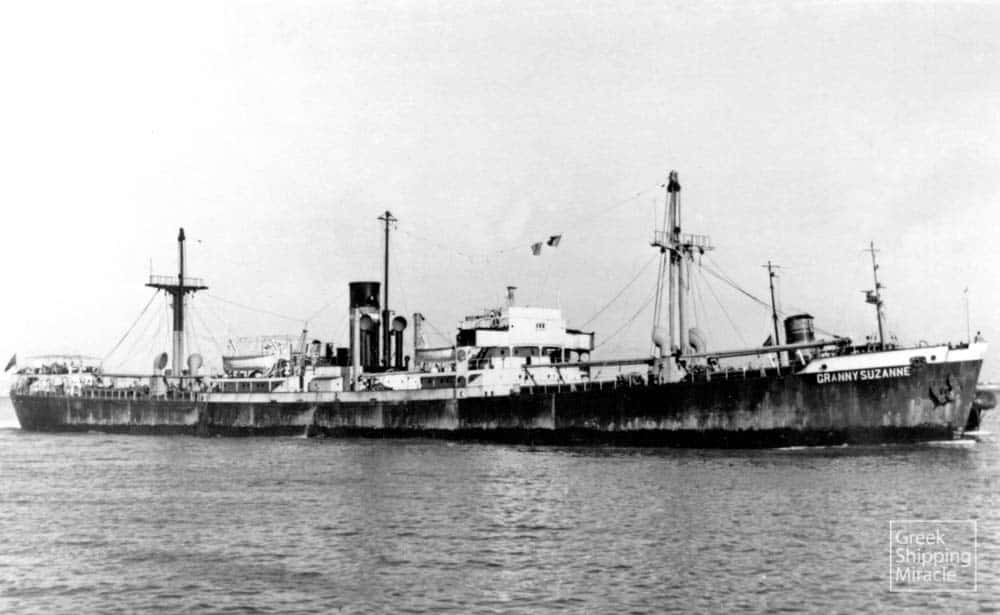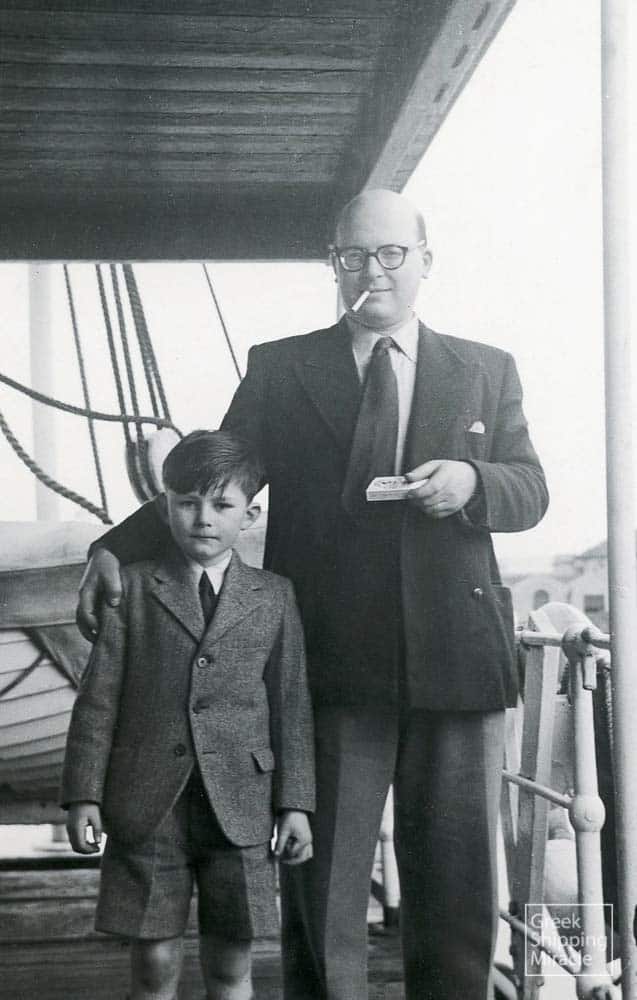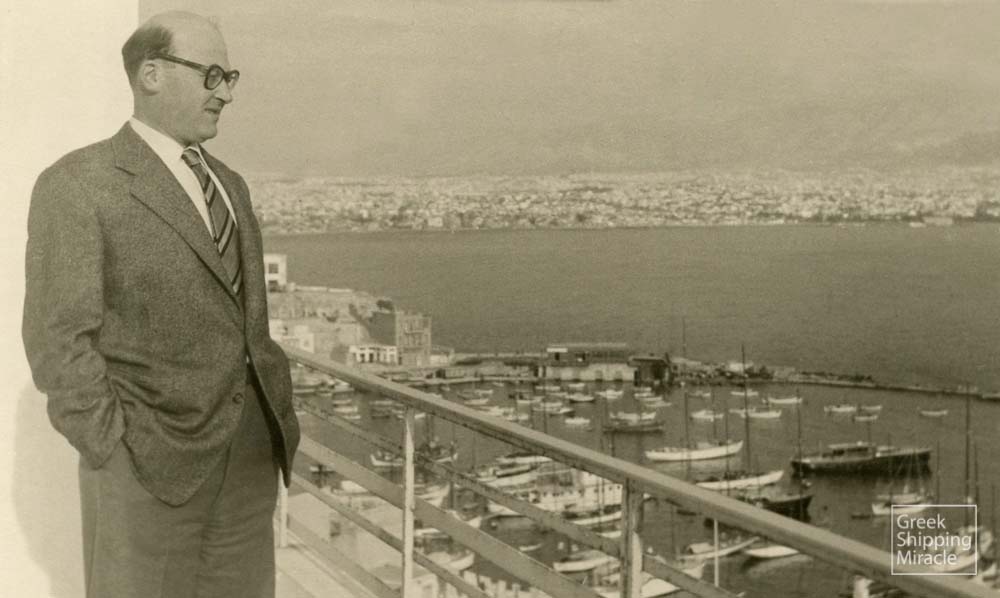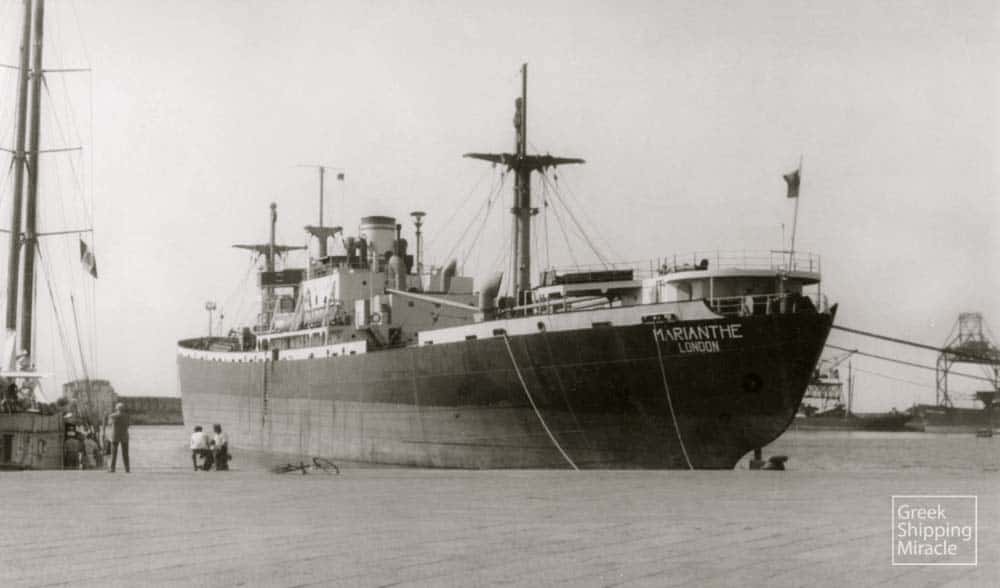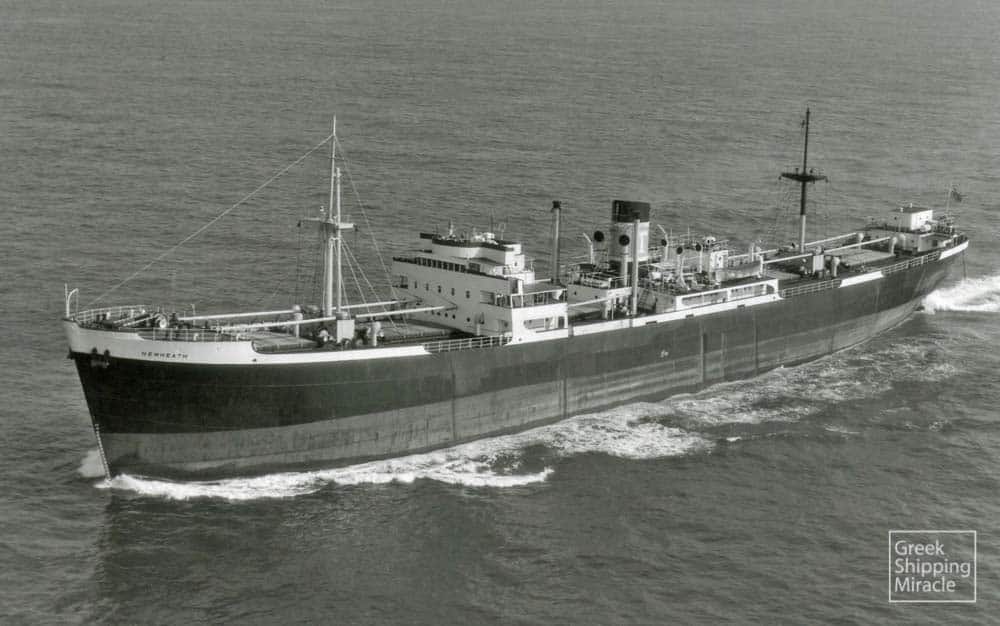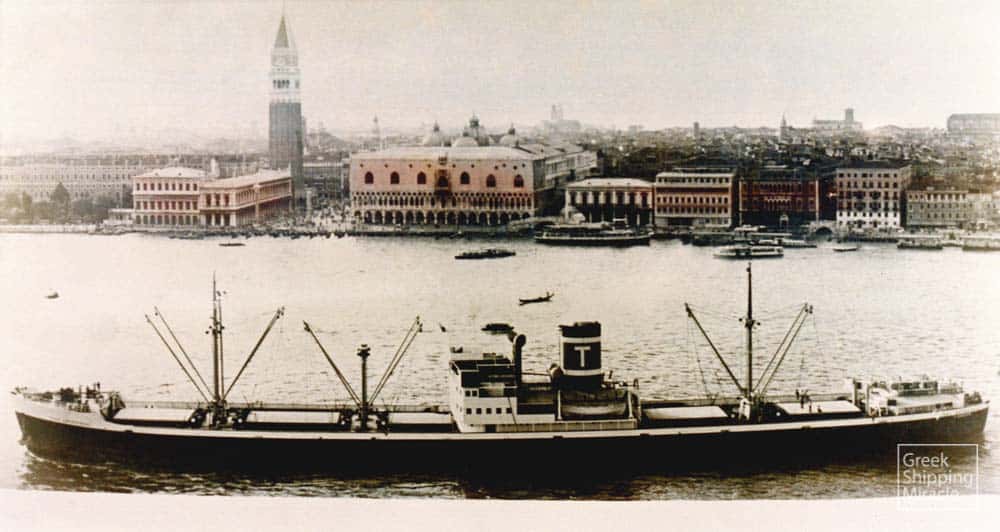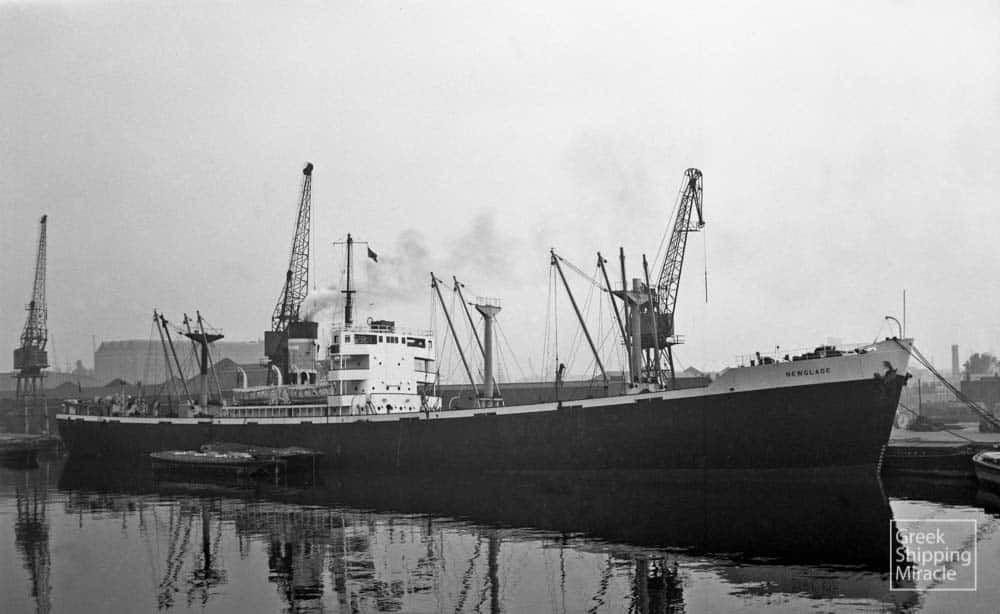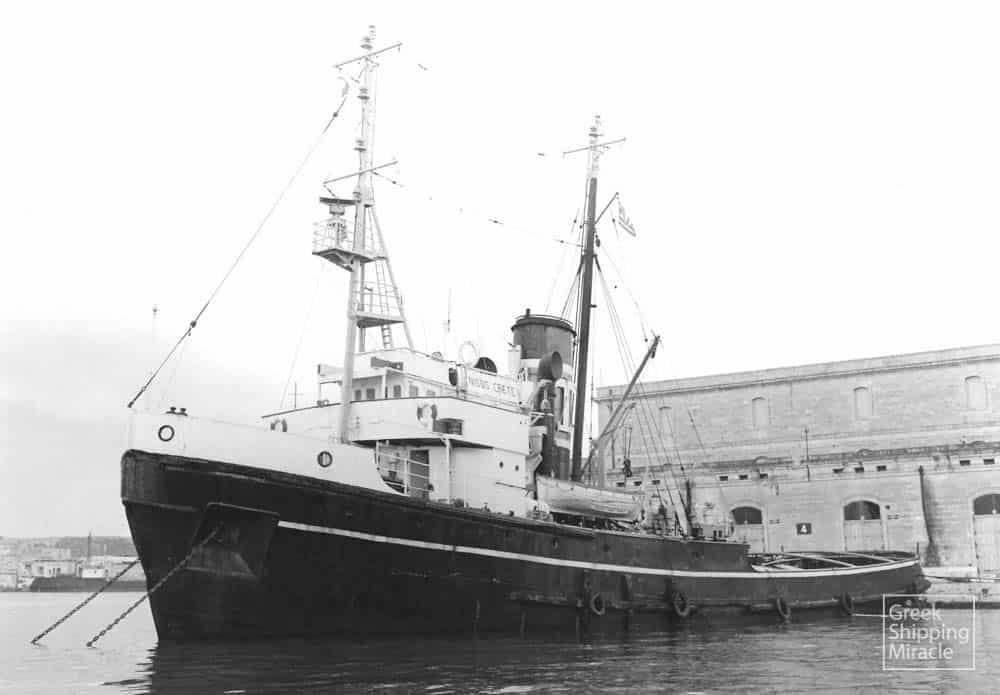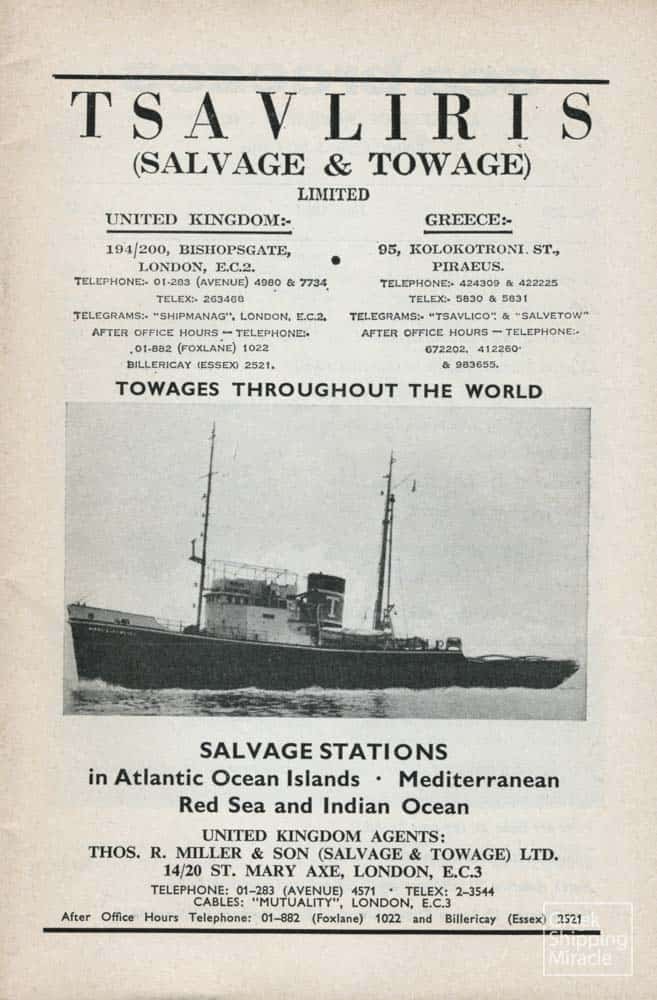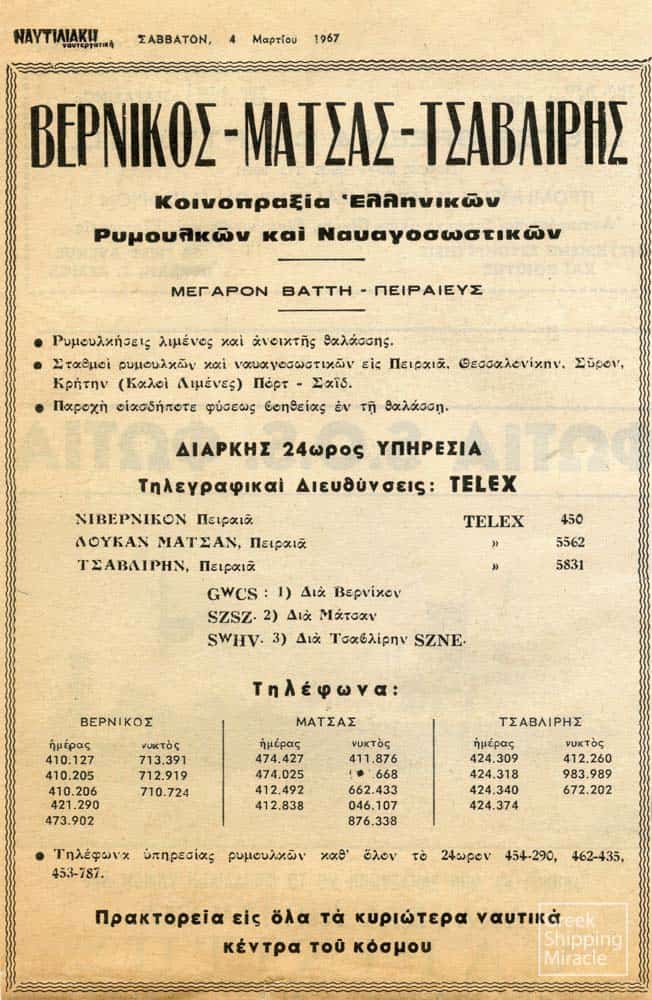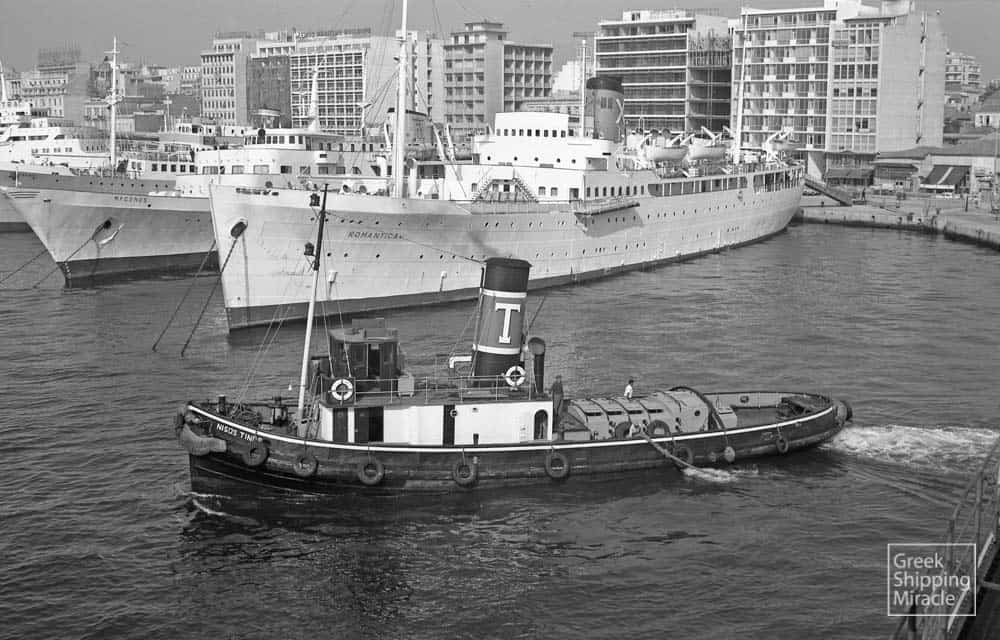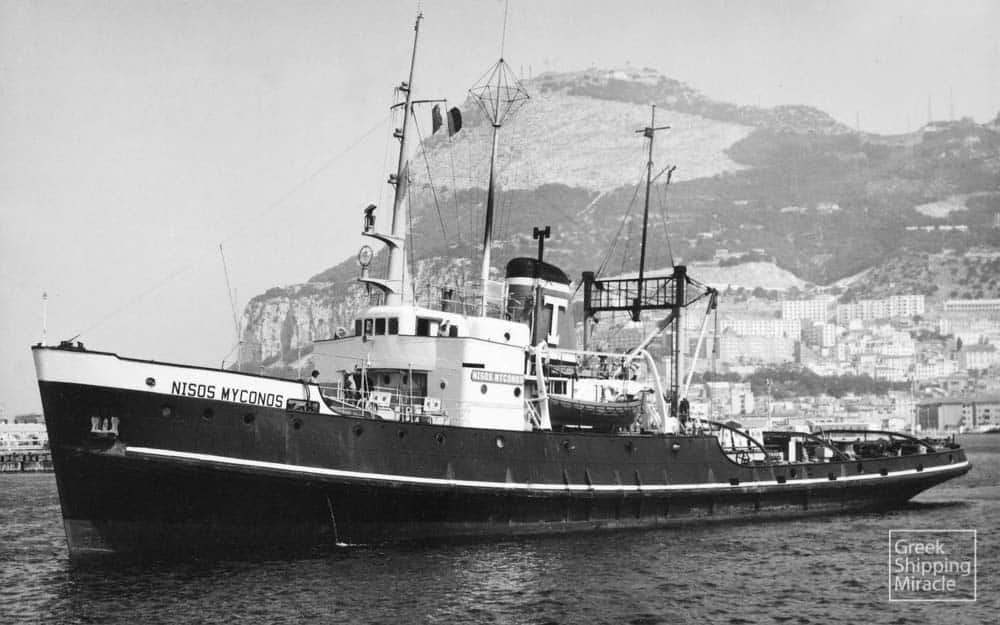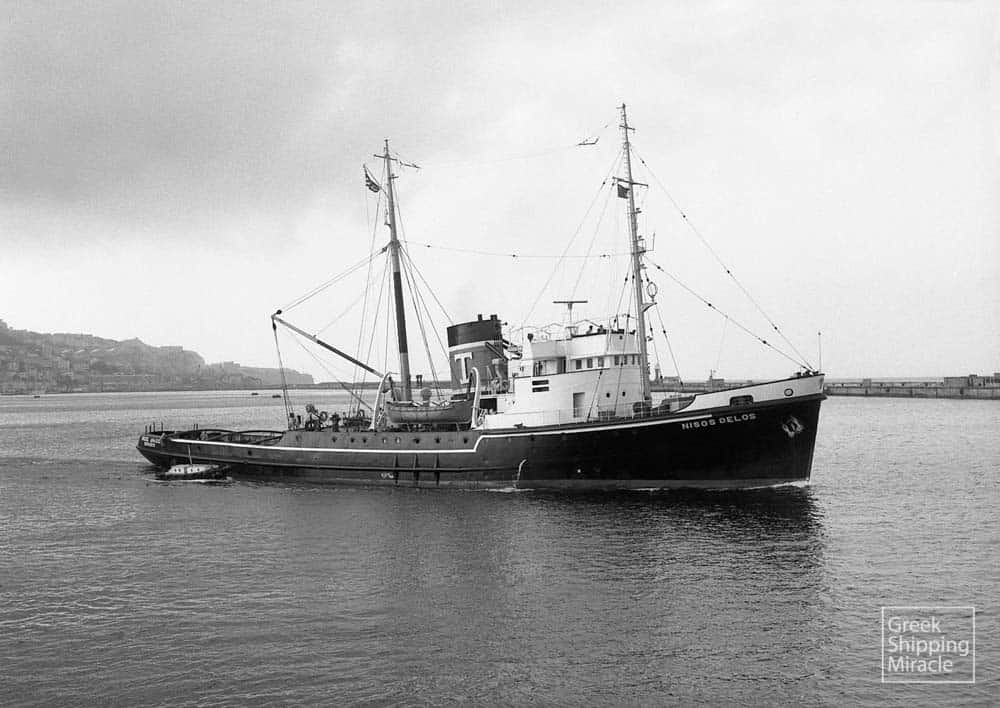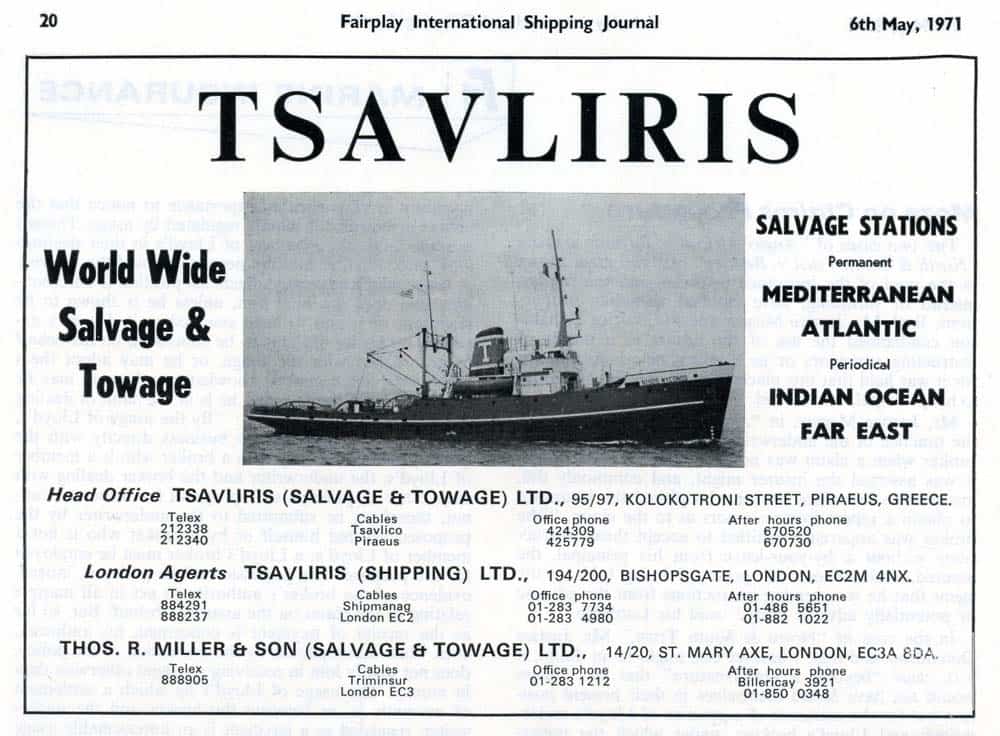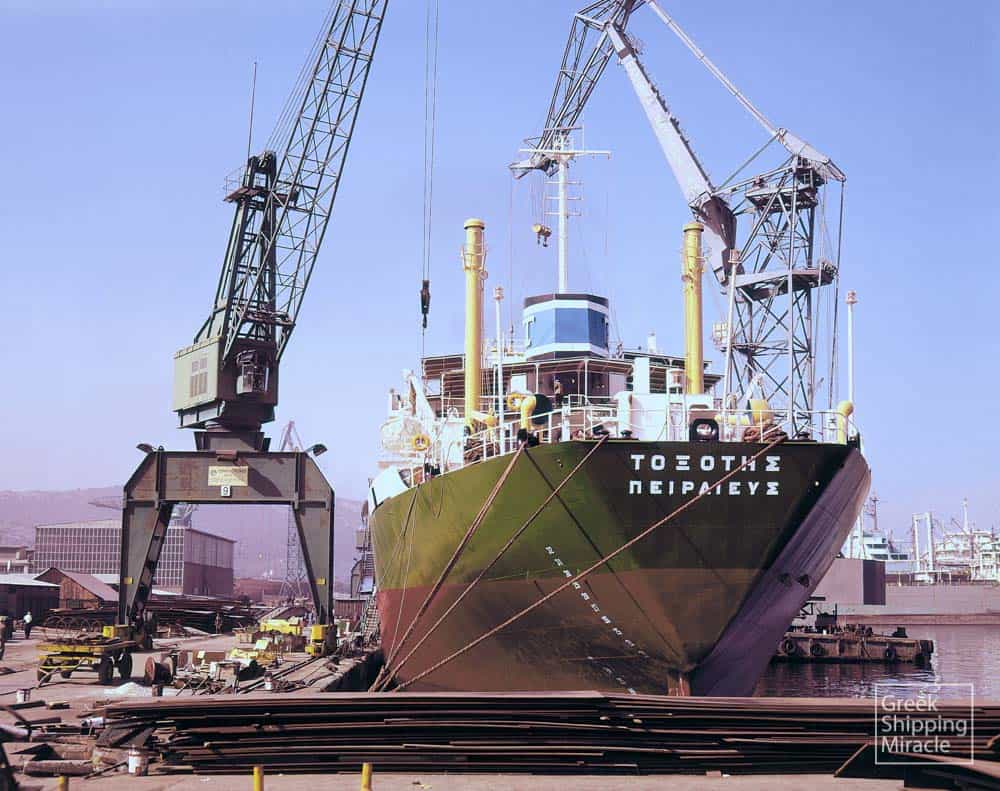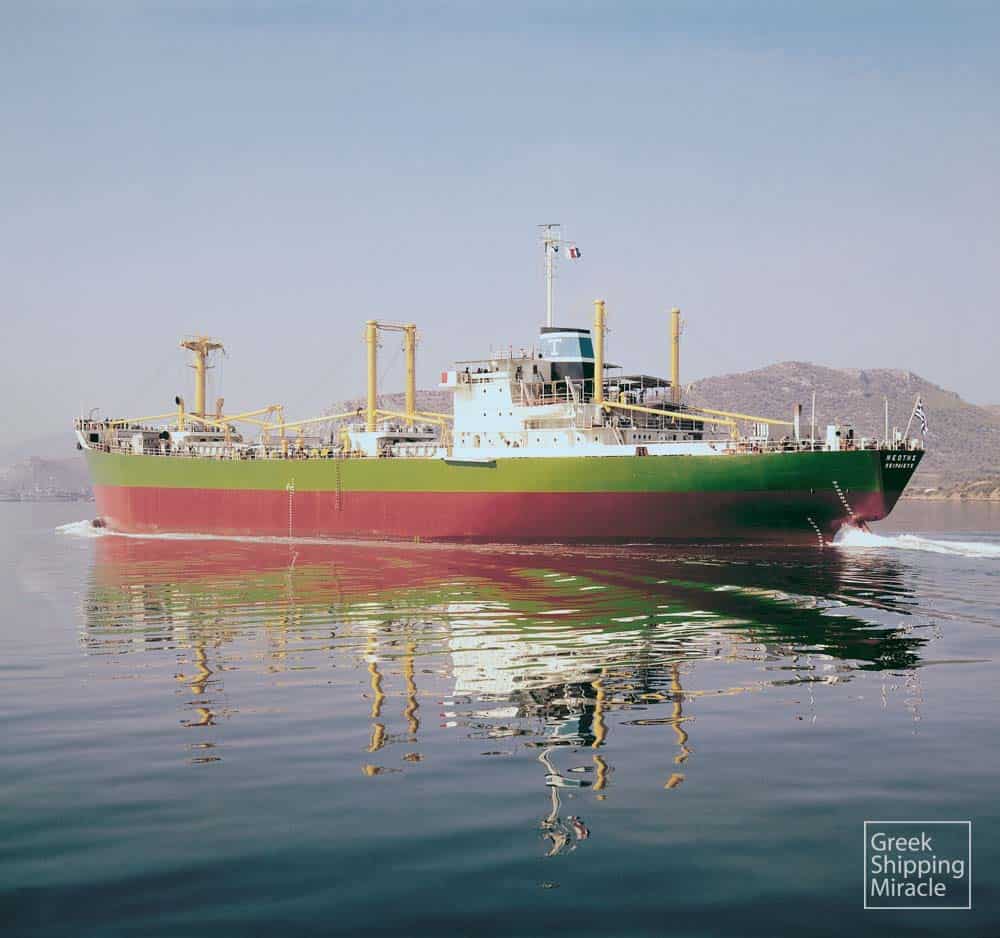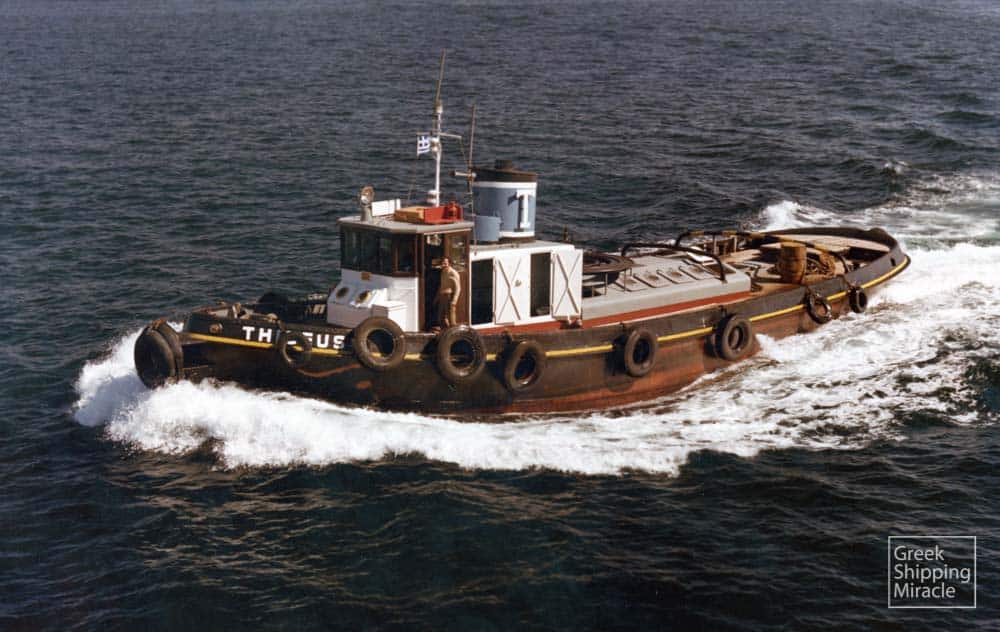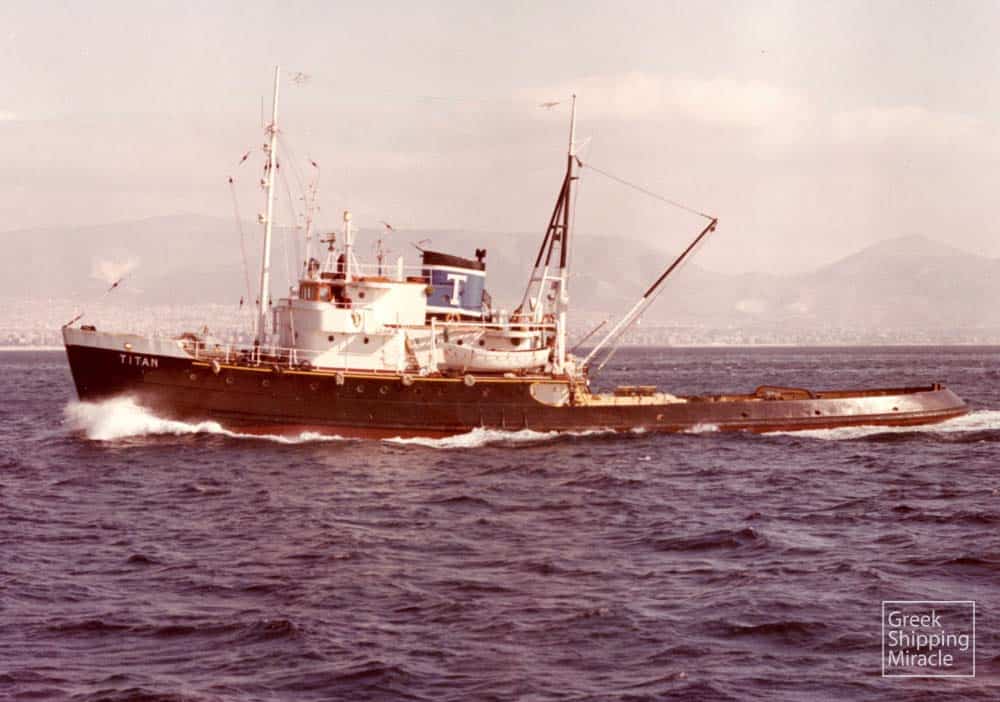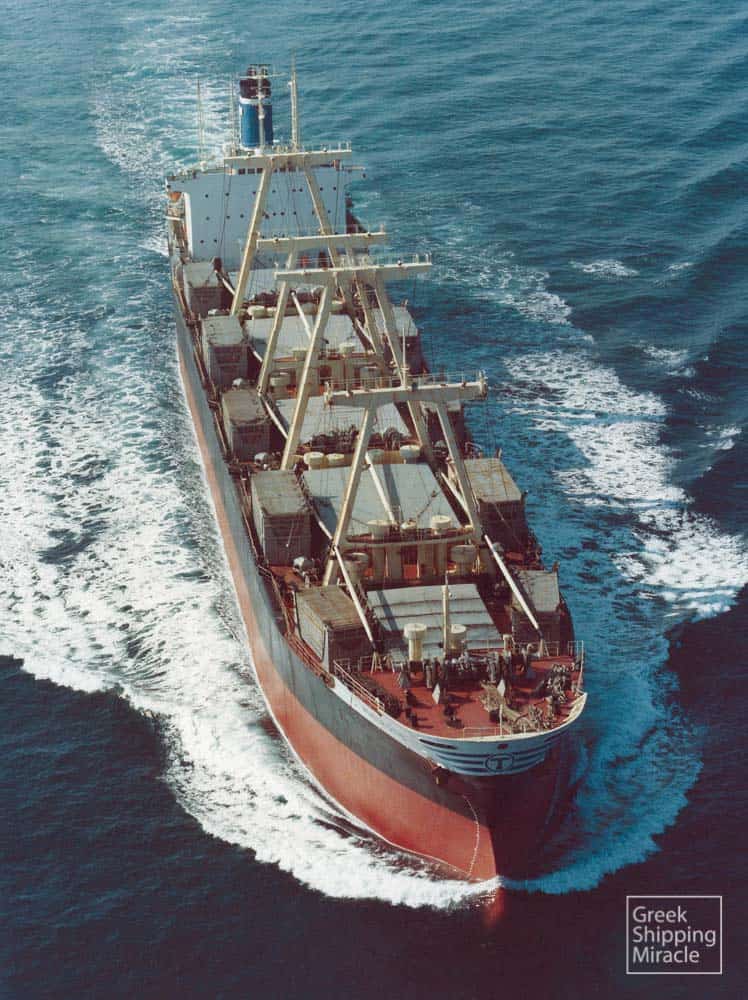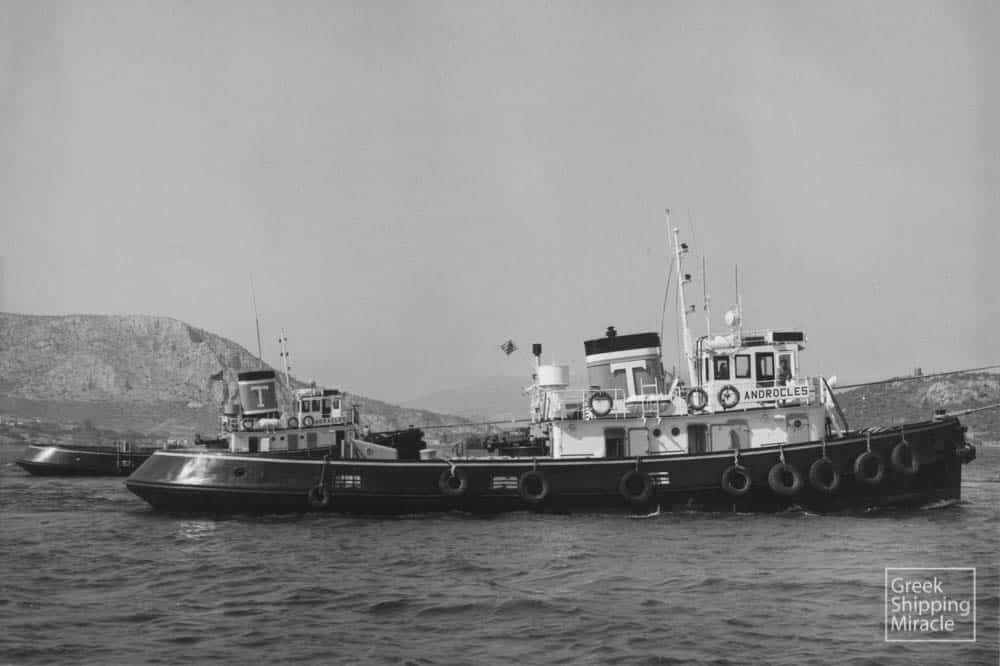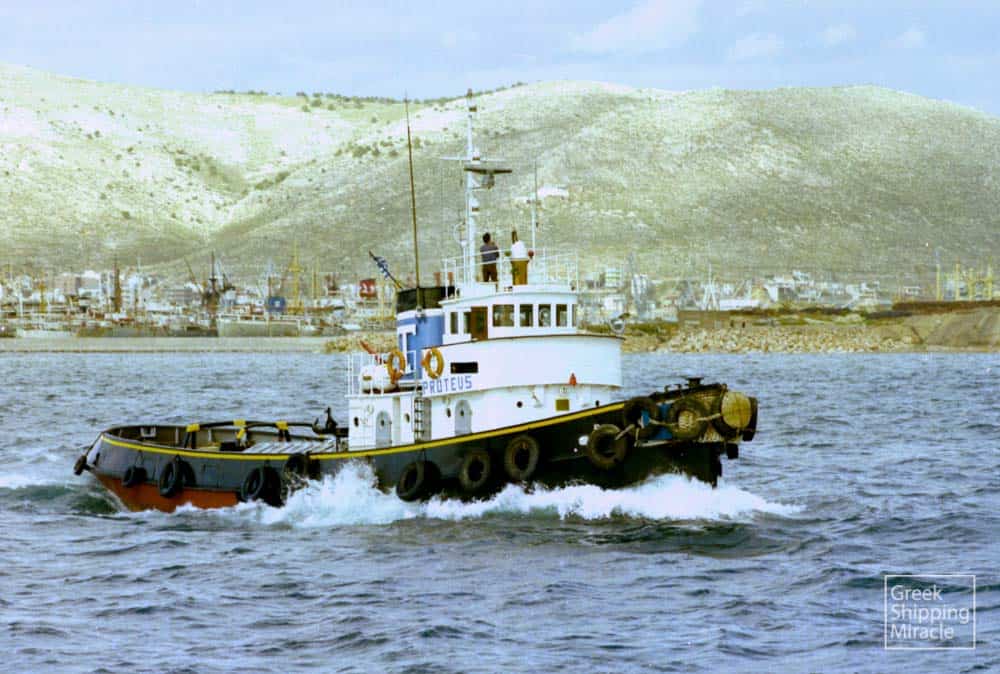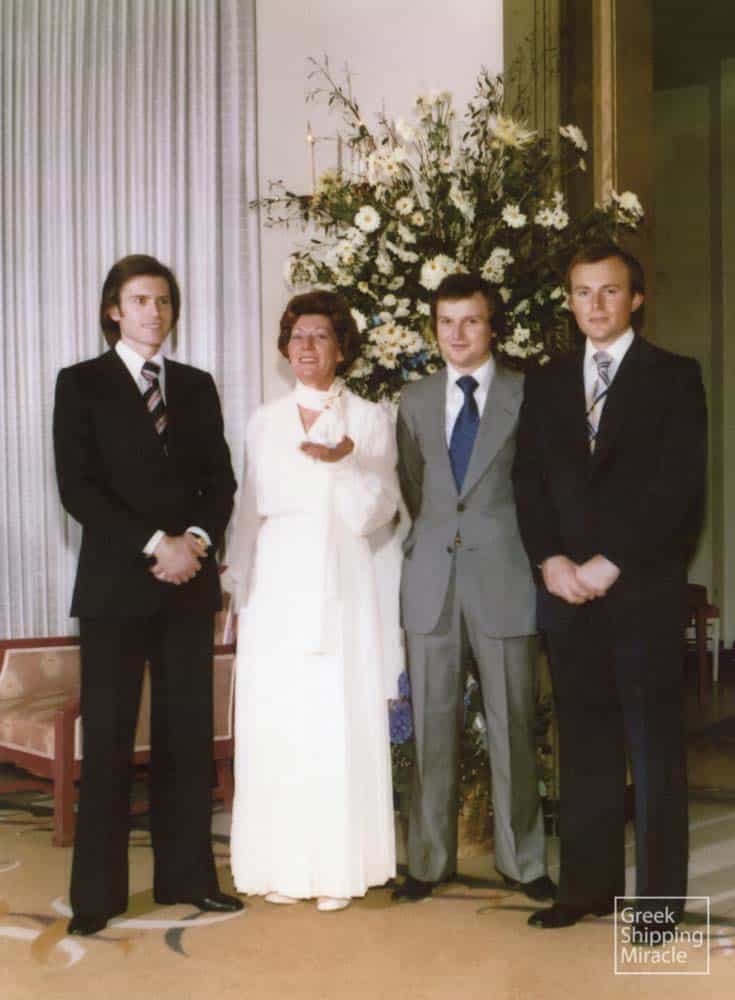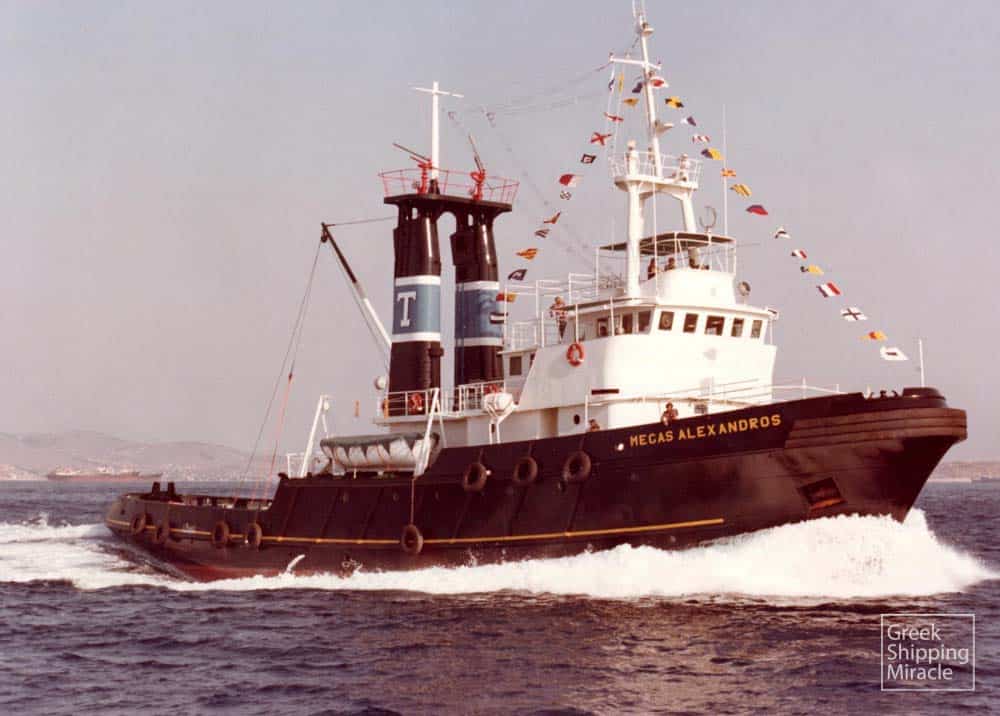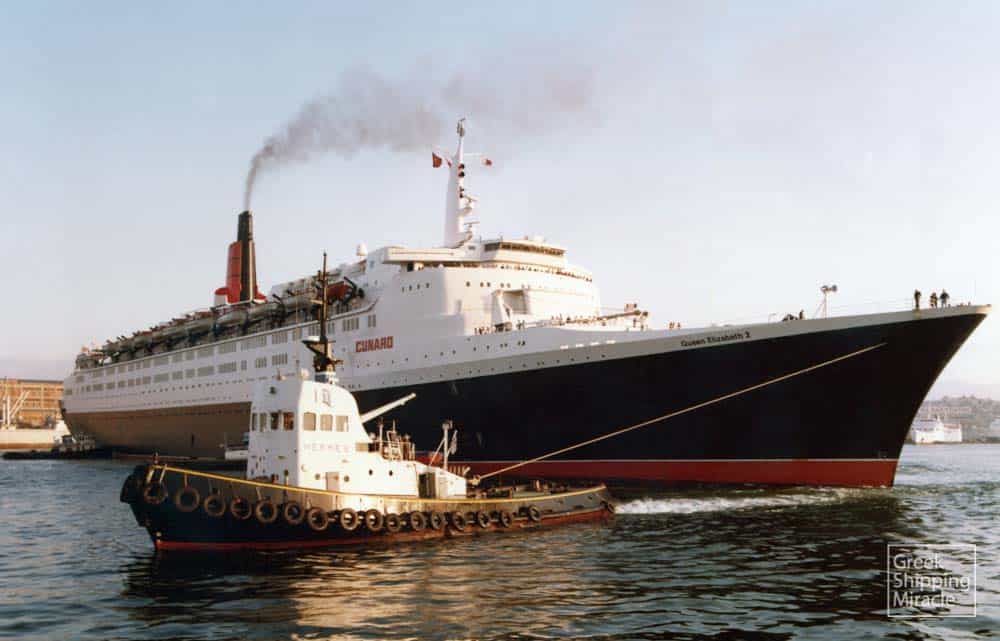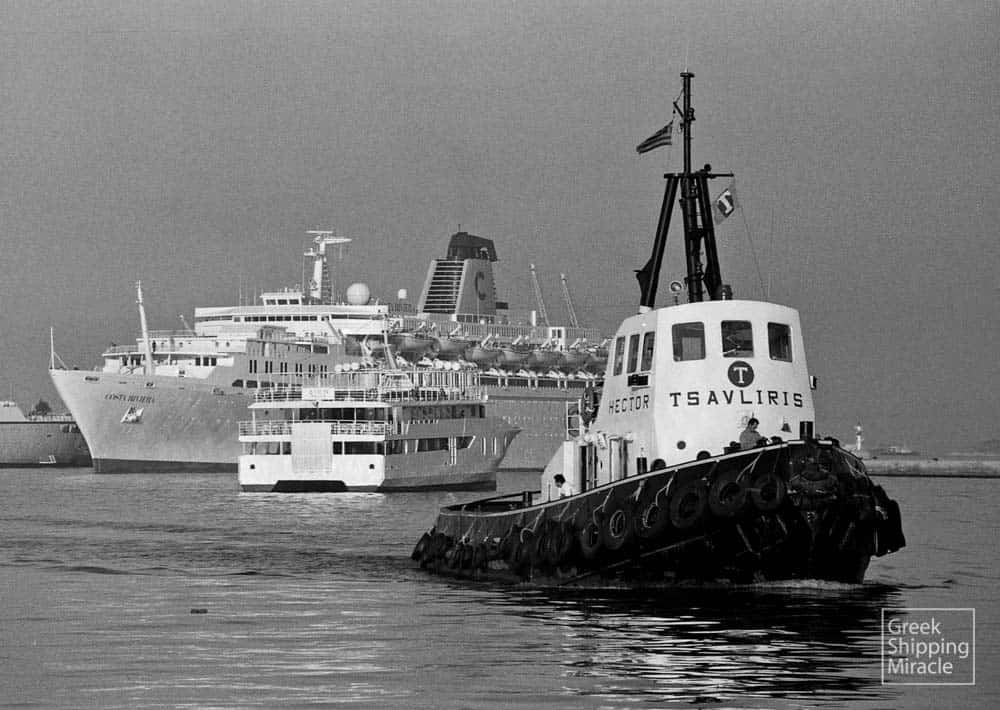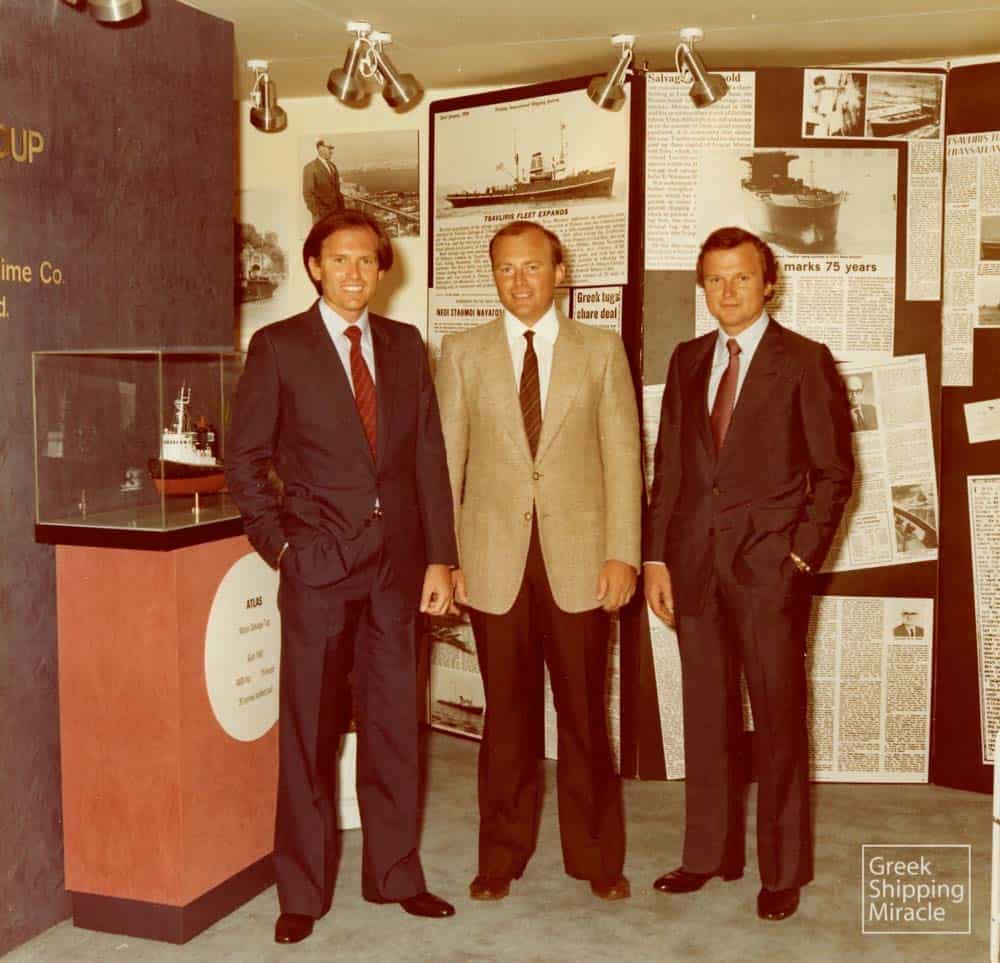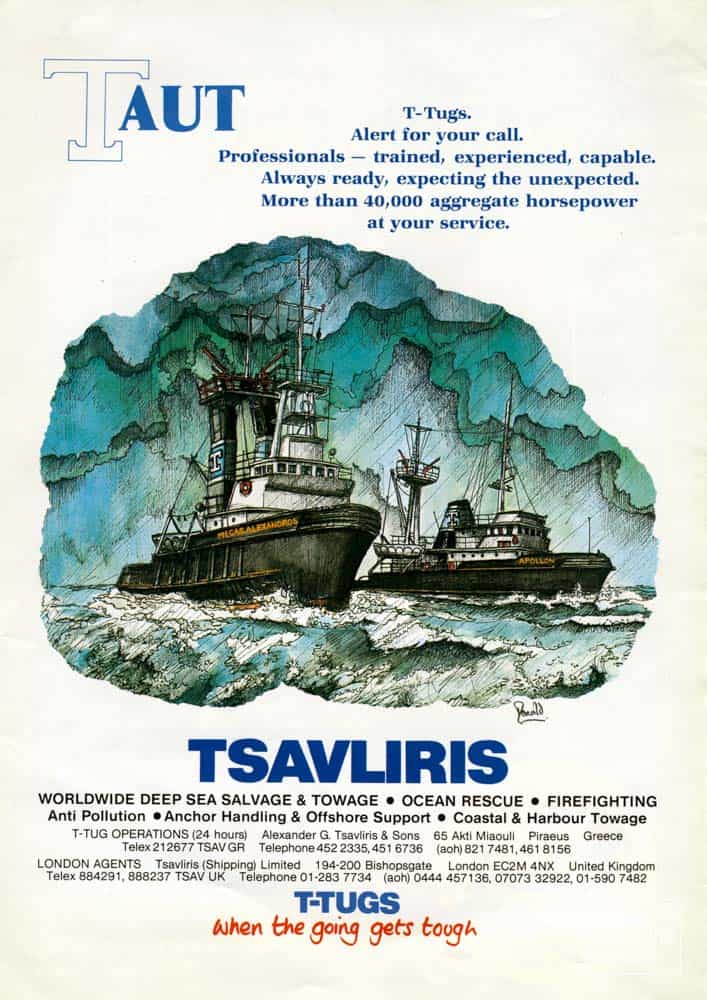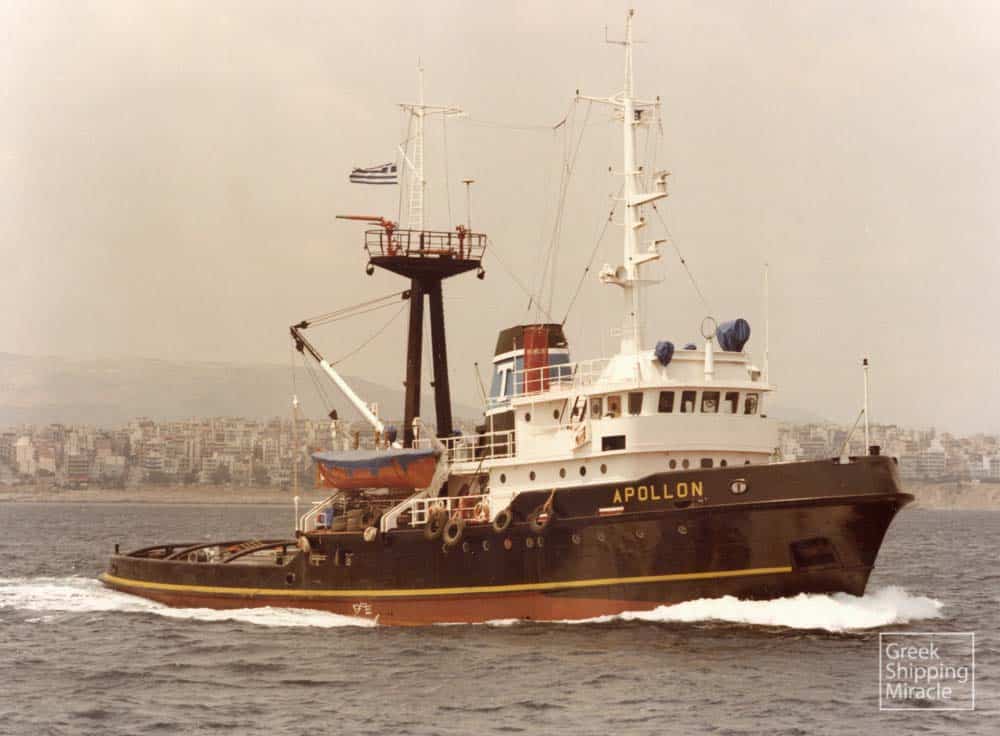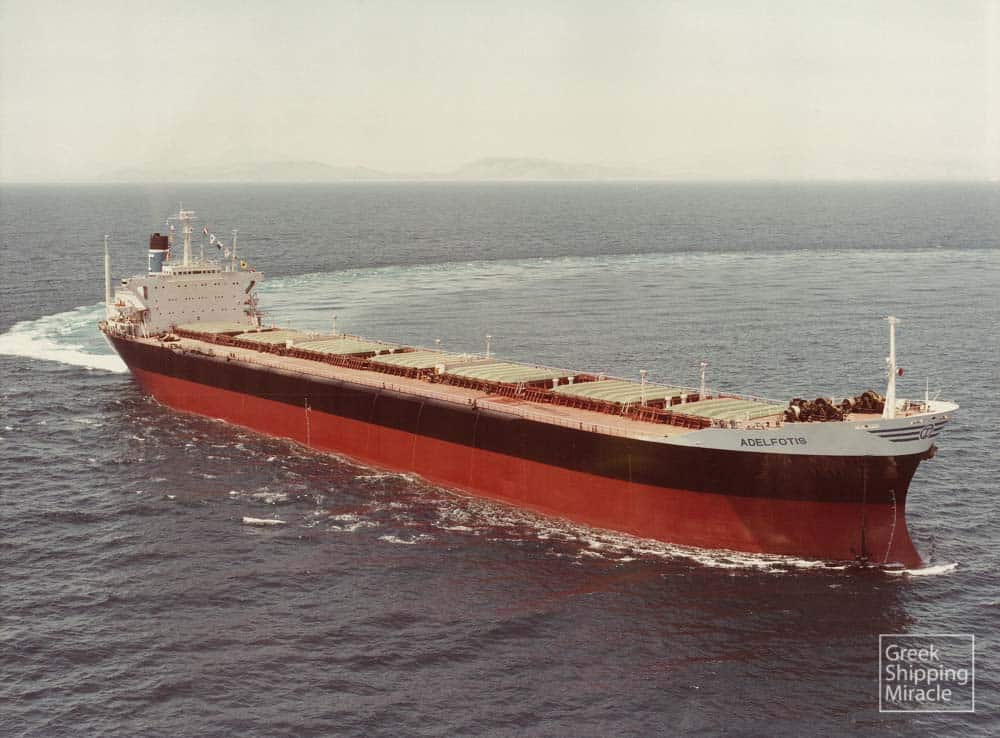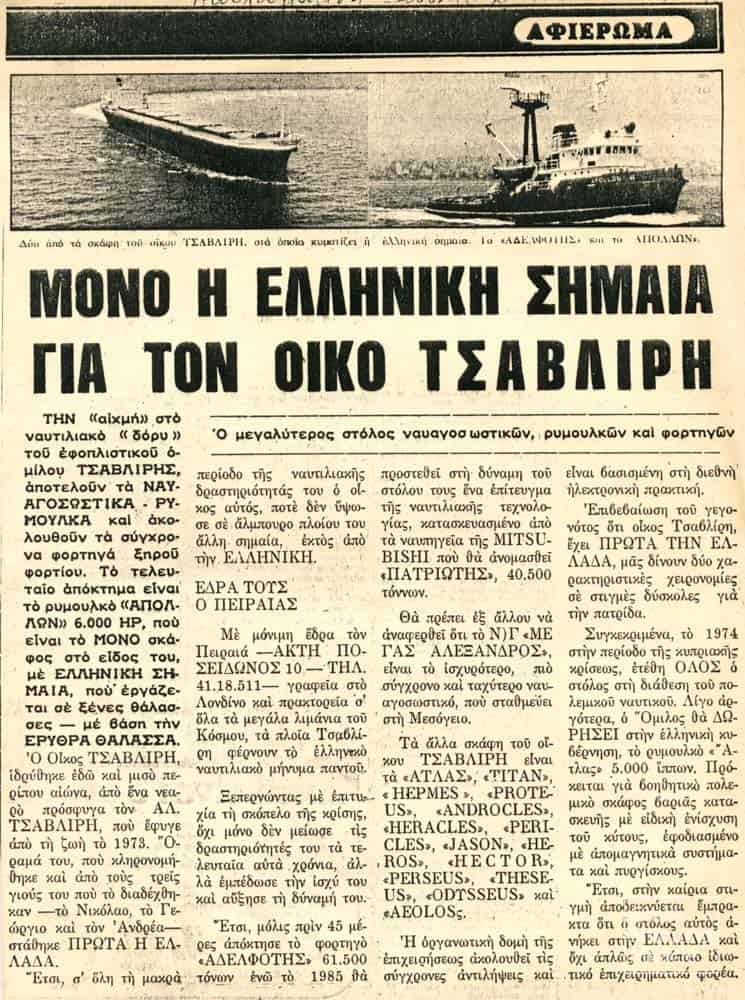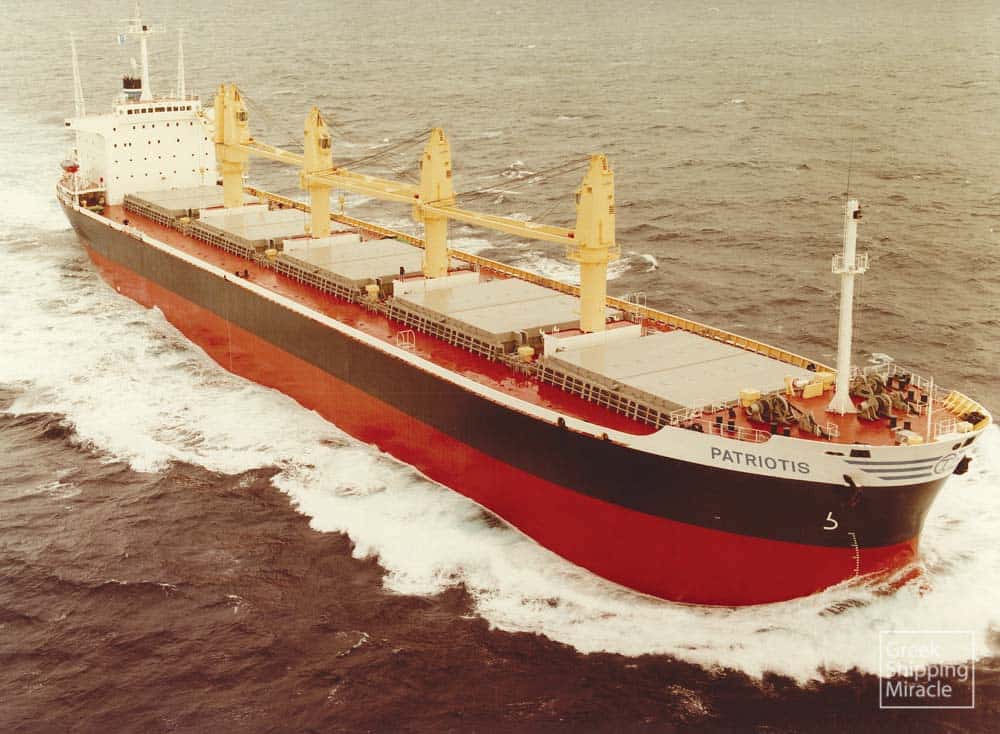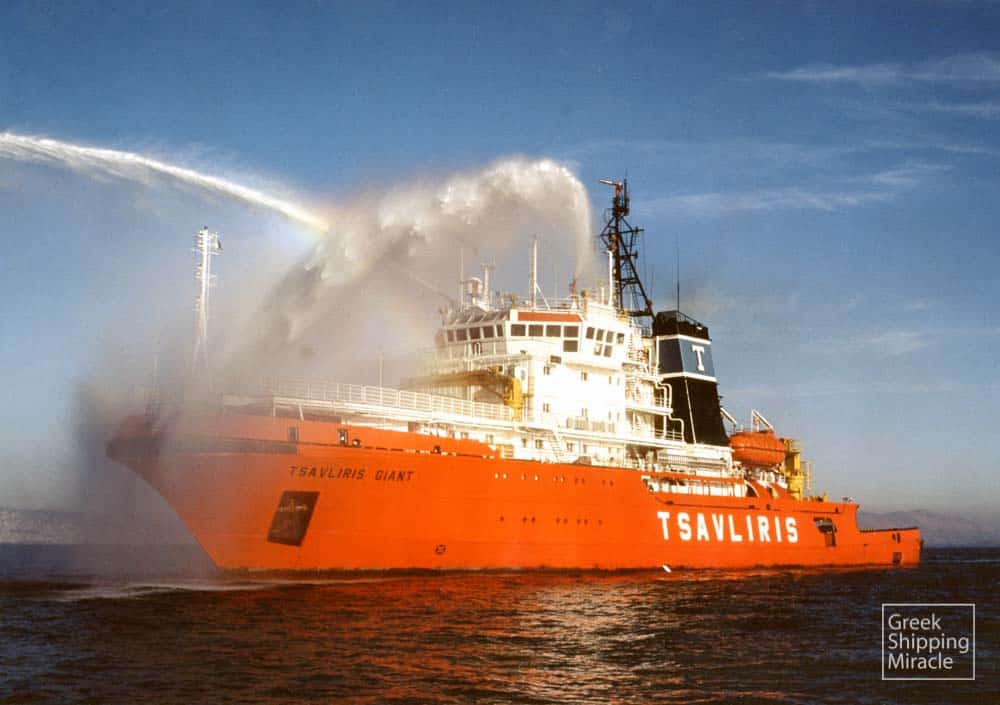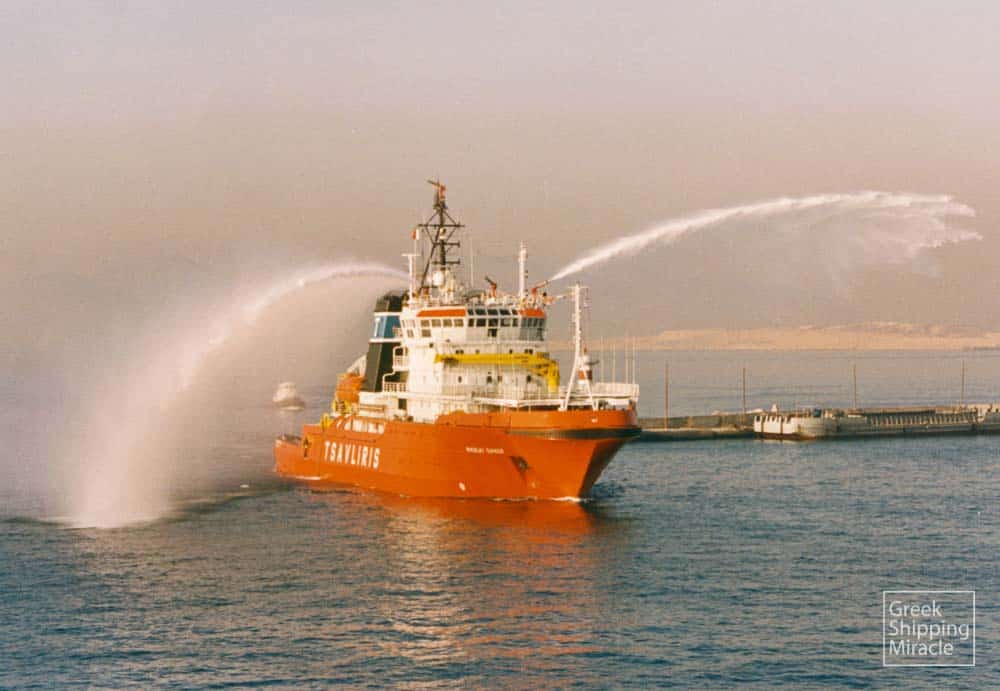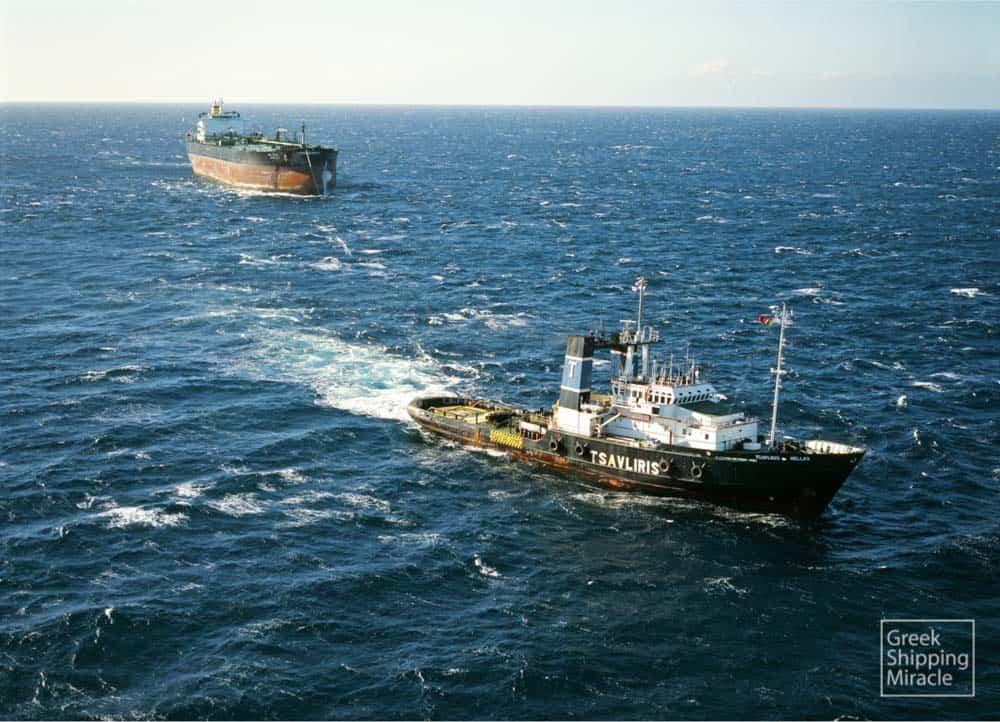ΟΜΙΛΟΣ ΑΛΕΞΑΝΔΡΟΥ Γ. ΤΣΑΒΛΙΡΗ
Ο Αλέξανδρος Γ. Τσαβλίρης γεννήθηκε το 1914 στο Ζonguldak της Μικράς Ασίας, τον μεγαλύτερο ανθρακευτικό σταθμό της Μαύρης Θάλασσας. Στην πόλη αυτή είχε εγκατασταθεί περί το 1890 ο παππούς του Ανδρέας Τσαβλίρης, ναυτικός με καταγωγή από το χωριό Λιβάρτζι της Πελοποννήσου, ανοίγοντας ένα μικρό πανδοχείο. Λίγο αργότερα, ο γιος του Γεώργιος ξεκίνησε να εργάζεται στη μεγάλη τοπική εταιρεία ανθράκευσης Société D’ Héraclée μέχρι το 1921 οπότε εγκαταστάθηκε οικογενειακώς στα Θεραπειά, στα περίχωρα της Κωνσταντινούπολης. Τον επόμενο χρόνο ωστόσο, εξαιτίας της Μικρασιατικής καταστροφής, αναγκάστηκε μαζί με την οικογένεια του να επιστρέψει ως πρόσφυγας στην Ελλάδα.
Με την εγκατάστασή τους στον νέο τόπο κατοικίας τους, τον Πειραιά, ο Γεώργιος και η σύζυγος του Μαριάνθη – το γένος Παπαδάτου – αντιμετώπισαν σημαντικές δυσκολίες στην προσπάθεια τους να στηρίξουν την πολυμελή οικογένειά τους. Έτσι, την εκπαίδευση του τριτότοκου γιού τους Αλέξανδρου ανέλαβε ο αδελφός της μητέρας του Νικόλαος Τρύφωνος Παπαδάτος, ο οποίος είχε αναπτύξει σημαντική και πολυδιάστατη επιχειρηματική δραστηριότητα. Ιδιαίτερα επιμελής και εργατικός, ο νεαρός Αλέξανδρος Τσαβλίρης ξεκίνησε να εργάζεται από τα 15 του χρόνια ενώ ήταν ακόμα μαθητής νυκτερινού γυμνασίου. Απασχολούνταν καθημερινά σε ένα μικρό ξύλινο ατμοκίνητο ρυμουλκό που απέκτησε το 1929 η οικογένειά του με τη βοήθεια του Νικολάου Τ. Παπαδάτου. Το σκάφος ονομάστηκε ΑΛΕΚΟΣ –όμως έγινε ευρύτερα γνωστό ως ΜΠΟΥΡΜΠΟΥΛΑΣ – και ρυμουλκούσε φορτηγίδες με κάρβουνο που προορίζονταν για την ανθράκευση ατμοπλοίων.
Αμέσως μετά την ολοκλήρωση των γυμνασιακών του σπουδών και με την προτροπή του Νικόλαου Παπαδάτου, ο Αλέξανδρος Τσαβλίρης εγκαταστάθηκε στο Λονδίνο. Εργάστηκε στα ναυτιλιακά γραφεία των οικογενειών Βεργωτή και Γουλανδρή όπου εξοικειώθηκε με τη λειτουργία του κλάδου, με τον οποίο ασχολήθηκε επιχειρηματικά για το υπόλοιπο της ζωής του.
Τον Ιούλιο του 1938, ο Αλέξανδρος Γ. Τσαβλίρης πραγματοποίησε το πρώτο επιχειρηματικό του άνοιγμα στη ναυτιλία συμμετέχοντας με ποσοστό 40% στο υπό ελληνική σημαία φορτηγό ατμόπλοιο SUSSANNA, κατασκευής 1904, το οποίο αγόρασε ο Νικόλαος Παπαδάτος. Το πλοίο ταξίδεψε σχεδόν μια τριετία, προτού απολεσθεί στις 4 Απριλίου 1941 στη διάρκεια αεροπορικού βομβαρδισμού στην Κέρκυρα. Εν τω μεταξύ, τον Ιανουάριο του 1940, λίγους μήνες μετά από την κήρυξη του Β’ Παγκοσμίου Πολέμου, ο Αλέξανδρος Τσαβλίρης συνέστησε στο Λονδίνο την εταιρεία A. G. Tsavliris Ltd., στην οποία συμμετείχε και ο Νικόλαος Παπαδάτος.
Σε όλη τη διάρκεια του Πολέμου, ο Αλέξανδρος Γ. Τσαβλίρης εργάστηκε στο Βρετανικό Υπουργείο Μεταφορών στον τομέα συντονισμού των κινήσεων των ελληνικών πλοίων που συμμετείχαν μαζί με βρετανικά συμμαχικά στις νηοπομπές του Ατλαντικού. Μετά το τέλος του πολέμου, έχοντας αποκτήσει τη βρετανική υπηκοότητα, συνέχισε να ζει στο Λονδίνο, με τη σύζυγό του Claire, το γένος Brown. Εκεί γεννήθηκαν και οι τρεις γιοί τους, ο Νίκος το 1946, ο Γιώργος το 1948 και ο Ανδρέας το 1950.
Ο Τσαβλίρης επαναδραστηριοποιήθηκε μεταπολεμικά στον χώρο της ναυτιλίας, κερδίζοντας σε σύντομο χρονικό διάστημα την αναγνώριση στους επιχειρηματικούς κύκλους του City του Λονδίνου. Μεταξύ άλλων έγινε αποδεκτός ως underwriting member των Lloyd’s. Στις αρχές του 1947, απέκτησε έξι ακτοπλοϊκά φορτηγά υπό βρετανική σημαία, τα οποία απασχολήθηκαν στη μεταφορά ξυλείας από τη Δυτική Γερμανία σε προορισμούς του Ηνωμένου Βασιλείου και της Δυτικής Ευρώπης, χάρη σε συμβόλαιο που εξασφάλισε από τη βρετανική κυβέρνηση στο πλαίσιο των γερμανικών πολεμικών επανορθώσεων. Την ίδια χρονιά, ίδρυσε μια νέα εταιρεία, την City Shipping Co. Ltd., η οποία το 1951 μετονομάστηκε Tsavliris (Shipping) Ltd. υποκαθιστώντας την A. G. Tsavliris Ltd. Η αλλαγή αυτή υπαγορεύτηκε από τη διεύρυνση της δραστηριότητας του Αλέξανδρου Γ. Τσαβλίρη και στο χώρο της ποντοπόρου ναυτιλίας που πραγματοποιήθηκε από τον Δεκέμβριο του 1949 έως τα μέσα της δεκαετίας του 1950.
Το 1956 σηματοδότησε την επιστροφή του στο ελληνικό νηολόγιο με το φορτηγό πλοίο GEORGIOS TSAVLIRIS, καθώς και με τη δημιουργία γραφείου στον Πειραιά υπό την επωνυμία Tσαβλίρης (Ελλάς) Ν.Ε.Π.Ε. Στη διάρκεια των επόμενων ετών, προσέθεσε και άλλα πλοία υπό ελληνική σημαία στο στόλο του, ανταποκρινόμενος στην πρόσκληση της κυβέρνησης για την ενδυνάμωση του ελληνικού νηολογίου.
H δεκαετία του 1960 υπήρξε η πλέον παραγωγική στη σταδιοδρομία του Αλέξανδρου Γ. Τσαβλίρη. Παρά τη σοβαρή κρίση που είχε εν τω μεταξύ ξεσπάσει, αναζήτησε νέες ευκαιρίες. Στο πλαίσιο αυτό, το 1961 δοκίμασε αρχικά την εκμετάλλευση πλοίων υπό την ανερχόμενη τότε σημαία του Λιβάνου υψώνοντάς την σε δύο νεοαποκτηθέντα πλοία, ενώ την περίοδο 1962-1964 επανήλθε στο βρετανικό νηολόγιο αγοράζοντας διαδοχικά εννέα φορτηγά πλοία πολεμικής κατασκευής. Λίγο μετά τα μέσα της ίδιας δεκαετίας, εστίασε το ενδιαφέρον του στο νεοϊδρυθέν νηολόγιο της Κύπρου, στο οποίο εντάχθηκαν σταδιακά όλα τα πλοία του στόλου του. Εν τω μεταξύ, η λειτουργία των ποντοπόρων πλοίων του υπήρξε ιδιαίτερα επικερδής κυρίως εξαιτίας της απασχόλησης σημαντικού μέρους του στόλου στις μεταφορές της Κούβας.
Κορυφαίος όμως σταθμός στην πορεία της επιχείρησης την ίδια δεκαετία υπήρξε η είσοδος στον τομέα της ναυαγιαιρεσίας και της ρυμούλκησης. Έχοντας εμπνευστεί από ένα τυχαίο περιστατικό, αποφάσισε τη δραστηριοποίησή του στον συγκεκριμένο χώρο προχωρώντας το 1964 στην απόκτηση σε πλειστηριασμό ενός ρυμουλκού που μετονομάστηκε NISOS CRETE.
Την ίδια χρονιά, ίδρυσε την εταιρεία Τσαβλίρης (Ναυαγιαιρεσίαι & Ρυμουλκήσεις) Ν.Ε.Π.Ε., η οποία μέσα σε ενάμιση χρόνο αγόρασε 17 ακόμα ρυμουλκά και ναυαγοσωστικά. Το σύνολο των πλοίων κατέπλευσε στον Πειραιά για την πραγματοποίηση των αναγκαίων εργασιών συντήρησης, επισκευών και μετασκευών. Για την υλοποίηση της ανωτέρω πρωτοβουλίας επενδύθηκε το ποσό των 500.000 λιρών από ίδια κεφάλαια του ιδρυτή της εταιρείας.
Η νέα εταιρεία σύντομα εξελίχθηκε στη μεγαλύτερη του κλάδου στη Μεσόγειο προσφέροντας υπηρεσίες τόσο στο λιμάνι του Πειραιά όσο και σε άλλα λιμάνια της ελληνικής επικράτειας. Συγχρόνως, διεύρυνε την παρουσία της και σε λιμάνια άλλων χωρών, εγκαθιστώντας σταθμούς διάσωσης στην Ερυθρά Θάλασσα, στον Ατλαντικό και τον Ινδικό Ωκεανό. Για την αποτελεσματικότερη προώθηση των δραστηριοτήτων του ομίλου, συστάθηκε στο Λονδίνο η εταιρεία Thos. R. Miller & Son (Salvage & Towage) Ltd. με διευθυντές τον Αλέξανδρο Τσαβλίρη και τους Βρετανούς H. B. Tiley και P. N. Miller.
Σε λιγότερο από μια τριετία, με την προσθήκη και άλλων μονάδων, ο στόλος της εταιρείας αποτελούνταν από 29 ρυμουλκά και ναυαγοσωστικά, συνολικής ιπποδύναμης 25.000 ίππων, ενώ 30 άτομα απασχολούνταν στα γραφεία στο Λονδίνο και άλλα τόσα στον Πειραιά. Παράλληλα, στο στόλο των ρυμουλκών εργάζονταν περισσότεροι από 300 ναυτικοί, στην πλειονότητά τους Έλληνες, στις ικανότητες των οποίων είχε επενδύσει ο Τσαβλίρης. Εν τω μεταξύ, από τον Οκτώβριο του 1965, ο όμιλος Τσαβλίρη είχε προβεί σε συμφωνία συνεργασίας με δύο ακόμα παραδοσιακούς ομίλους ρυμουλκών, σχηματίζοντας την «Ελληνική Κοινοπραξία Ρυμουλκών και Ναυαγοσωστικών Βερνίκος-Μάτσας-Τσαβλίρης» για την από κοινού παροχή υπηρεσιών στον ελληνικό χώρο, που λειτούργησε περίπου μια 25ετία υπό διάφορες μορφές και συνθέσεις. Ταυτόχρονα με την εν λόγω δραστηριότητα, ο Αλέξανδρος Γ. Τσαβλίρης, ανανέωσε το στόλο των ποντοπόρων πλοίων του ομίλου. Στο πλαίσιο αυτό, παρήγγειλε στα Ελληνικά Ναυπηγεία στον Σκαραμαγκά το 1968 για την κατασκευή δύο φορτηγών πλοίων τύπου SD-14 που παραδόθηκαν το 1971.
Λίγο πριν την ολοκλήρωση της ναυπήγησης των δύο πλοίων που ονομάστηκαν ΤΟXOTIS και NEOTIS, ο Τσαβλίρης αντιμετώπισε σοβαρό πρόβλημα υγείας που οδήγησε αναγκαστικά στον επαναπροσδιορισμό της στρατηγικής του ομίλου, ενώ αποφασίστηκε η μείωση του αριθμού του στόλου των ρυμουλκών. Ορισμένα από τα παλαιότερα οδηγήθηκαν στα διαλυτήρια στα τέλη του 1970, ενώ άλλα περιήλθαν τον Ιανουάριο του 1972 σε άλλο όμιλο, ο οποίος τα διατήρησε σε λειτουργία υπό την ίδια επωνυμία εντός της «Ελληνικής Κοινοπραξίας Ρυμουλκών και Ναυαγοσωστικών», σε μέλη της οποίας πουλήθηκαν ορισμένα ρυμουλκά.
Σε όλη τη διάρκεια της ασθένειάς του, ο Αλέξανδρος Γ. Τσαβλίρης φρόντισε να μεταφέρει στους γιούς του τις απαραίτητες γνώσεις γύρω από τη λειτουργία της οικογενειακής επιχείρησης. Οι τρεις διάδοχοι μυήθηκαν από νωρίς στο χώρο της ναυτιλίας με εργασία στα γραφεία της επιχείρησης, στα πλοία αλλά και στην οικία τους. Έχοντας δώσει μάχη επί μια πενταετία απέναντι στα σοβαρά προβλήματα υγείας που αντιμετώπιζε, ο Αλέξανδρος Γ. Τσαβλίρης απεβίωσε στις 12 Οκτωβρίου 1973.
Όσον αφορά το καθαρά επιχειρηματικό πεδίο, οι παραλαβές των δύο πρώτων νεότευκτων του ομίλου το 1971 είχαν συμπέσει με την πώληση των δύο τελευταίων παλαιών ποντοπόρων φορτηγών του στόλου του Αλέξανδρου Γ. Τσαβλίρη. Από την άλλη πλευρά, η επιχείρηση των ρυμουλκών είχε περιοριστεί στη λειτουργία μόλις 11 πλοίων. Με αυτά τα δεδομένα, οι γιοί του Τσαβλίρη χάραξαν τη δική τους πορεία, στις αρχές μιας δεκαετίας που χαρακτηρίστηκε από την εκρηκτική ανάπτυξη του παγκόσμιου στόλου και τις αθρόες ναυπηγήσεις με ολοένα αυξανόμενες τάσεις γιγαντισμού των πλοίων. Ωστόσο, οι δύο πετρελαϊκές κρίσεις διαφοροποίησαν ριζικά το ναυτιλιακό περιβάλλον οδηγώντας στις αρχές της επόμενης δεκαετίας στη χειρότερη ύφεση που είχε αντιμετωπίσει ο κλάδος από τα τέλη του Β’ Παγκοσμίου Πολέμου.
Το νέο ξεκίνημα του ομίλου υπό την ηγεσία των τριών γιών του Αλέξανδρου Γ. Τσαβλίρη αφορούσε στον τομέα των ρυμουλκών. Λίγο πριν τα μέσα του 1973, συστάθηκε η εταιρεία Ναυτεμπορικαί Επιχειρήσεις Ε.Π.Ε. με διαχειριστή τον αδελφό του πατέρα τους Θεόδωρο Γ. Τσαβλίρη. Η νεοσύστατη εταιρεία που δραστηριοποιήθηκε εξαρχής ανεξάρτητα από την υφιστάμενη «Ελληνική Κοινοπραξία Ρυμουλκών και Ναυαγοσωστικών» απέκτησε μέσα σε σύντομο χρονικό διάστημα δώδεκα ρυμουλκά. Εννέα από αυτά ήταν δηζελοκίνητα, γεγονός το οποίο αποδείχτηκε καταλυτικό, όταν οι τεράστιες μεταβολές στις τιμές του πετρελαίου κατέστησαν εξαιρετικά αντιοικονομική τη λειτουργία των ατμοκίνητων πλοίων. Αυτό οδήγησε και στην απόφαση πώλησης των ατμοκίνητων ρυμουλκών του στόλου, καθώς και επτά από τα έντεκα εναπομείναντα ρυμουλκά που είχαν αγοραστεί από τον Αλέξανδρο Τσαβλίρη. Τα τέσσερα υπόλοιπα μετονομάστηκαν και μεταβιβάστηκαν στο νέο επιχειρηματικό σχήμα.
Συγχρόνως, οι νέοι διαχειριστές της επιχείρησης ανέλαβαν πρωτοβουλία για την περαιτέρω ενδυνάμωση του στόλου των ποντοπόρων πλοίων, αγοράζοντας ένα bulk carrier 27.000 dwt, ηλικίας επτά ετών που μετονομάστηκε ADELFOTIS υψώνοντας ελληνική σημαία. Οι επενδύσεις συνεχίστηκαν και τα επόμενα χρόνια με την τοποθέτηση παραγγελίας στα ναυπηγεία της Βραζιλίας CCN Estaleiros Maua, Niteroi για την κατασκευή δύο bulk carriers 26.272 dwt, των υπό ελληνική σημαία ALEXANDROS G. TSAVLIRIS και CLAIRE A. TSAVLIRIS που παραδόθηκαν τον Σεπτέμβριο του 1978 και τον Δεκέμβριο του 1979 αντίστοιχα. Ο στόλος των ρυμουλκών που από το 1975 λειτουργούσε υπό τον έλεγχο εταιρείας με την επωνυμία Αλέξανδρος Γ. Τσαβλίρης & Υιοί Ανώνυμος Ναυτική Εταιρεία ενισχύθηκε το 1976 με την προσθήκη τριών ακόμα ρυμουλκών που αγοράστηκαν από γαλλικά συμφέροντα, ενώ τον Ιούλιο του 1979 οι αδελφοί Τσαβλίρη δώρησαν στο Πολεμικό Ναυτικό το ρυμουλκό τους ATLAS, πρώην NISOS ZAKYNTHOS.
Οι έντονες διακυμάνσεις στον παγκόσμιο ναυτιλιακό χώρο στη διάρκεια της δεκαετίας του 1970 δημιούργησαν νέα δεδομένα. Εκμεταλλευόμενοι τη συγκυρία της σημαντικής ανόδου των τιμών των πλοίων, οι τρεις αδελφοί πούλησαν με σημαντικό κέρδος το 1981 το bulk carrier ADELFOTIS, επενδύοντας την ίδια χρονιά στην αγορά πέντε ακόμα ρυμουλκών, τα οποία συνέβαλαν στην περαιτέρω ενδυνάμωση του ομίλου στον τομέα των εξειδικευμένων και σύνθετων εργασιών στο χώρο των ναυαγιαιρεσιών.
Το 1984, ο όμιλος Τσαβλίρη απέκτησε ένα bulk carrier 61.000 dwt ηλικίας 11 ετών το οποίο μετονομάστηκε ADELFOTIS υψώνοντας ελληνική σημαία. Λίγους μήνες αργότερα οι αδελφοί Τσαβλίρη παρήγγειλαν στα ιαπωνικά ναυπηγεία Mitsubishi Heavy Industries Ltd. στο Nagasaki ένα bulk carrier 42.300 dwt, το οποίο παραδόθηκε τον Φεβρουάριο του 1985 ως το υπό ελληνική σημαία PATRIOTIS.
Η ανάπτυξη του ποντοπόρου στόλου του ομίλου, τόσο σε ποσοτικό, όσο και σε ποιοτικό επίπεδο, συνέπεσε με την κρίση που ξέσπασε στα τέλη του 1981 και συνεχίστηκε με ελεύθερη πτώση μέχρι τα μέσα του 1986, προκαλώντας τεράστιες και πρωτόγνωρες – για τα μεταπολεμικά δεδομένα – καταστροφές σε πολλές εταιρείες του κλάδου διεθνώς. Στην περίπτωση δε των υπό ελληνική σημαία πλοίων, η κρίση είχε επιπρόσθετα δυσμενή αποτελέσματα εξαιτίας της άστοχης πολιτικής που υιοθετήθηκε από την ελληνική πολιτεία στο κρίσιμο διάστημα 1981-1986.
Λόγω της γενικευμένης κρίσης, οι αδελφοί Τσαβλίρη οδηγήθηκαν στην απόφαση να περιορίσουν τη δραστηριότητά τους στην ποντοπόρο ναυτιλία, επικεντρώνοντας στον τομέα της ναυαγιαιρεσίας και της ρυμούλκησης. Μεταξύ των ετών 1987 και 1988, τα πέντε πλοία του στόλου περιήλθαν σε νέες ιδιοκτησίες, ενώ οι τρεις αδελφοί διατήρησαν μετοχικά συμφέροντα στα περισσότερα από αυτά. Οι παραπάνω εξελίξεις σφράγισαν ουσιαστικά την περίοδο της πολύπλευρης δραστηριότητας του ομίλου που δημιούργησε ο Αλέξανδρος Γ. Τσαβλίρης, τόσο στον τομέα της ποντοπόρου ναυτιλίας όσο και στον τομέα των ρυμουλκών/ναυαγοσωστικών – μια περίοδος στη διάρκεια της οποίας αποκτήθηκαν και διαχειρίστηκαν από την οικογένεια περισσότερα από 100 πλοία διαφόρων τύπων και μεγεθών.
Από τις αρχές της δεκαετίας του 1990, ο όμιλος των αδελφών Τσαβλίρη έχει επικεντρώσει τη δραστηριότητά του αποκλειστικά στον τομέα των ναυαγιαιρεσιών και των ρυμουλκήσεων. Η δραστηριότητα αυτή έχει χαρακτηριστεί από τη διαρκή ανανέωση του πλωτού του υλικού με πλοία υψηλών προδιαγραφών. Το γεγονός αυτό, σε συνδυασμό με την τεχνογνωσία και το επίπεδο της οργάνωσης που απορρέει από την μακρόχρονη και γόνιμη παρουσία του στον συγκεκριμένο χώρο, τον έχει καταξιώσει ως έναν από τους πλέον αναγνωρισμένους ομίλους του κλάδου των ναυαγιαιρεσιών με παγκόσμιο κύρος και εμβέλεια.
